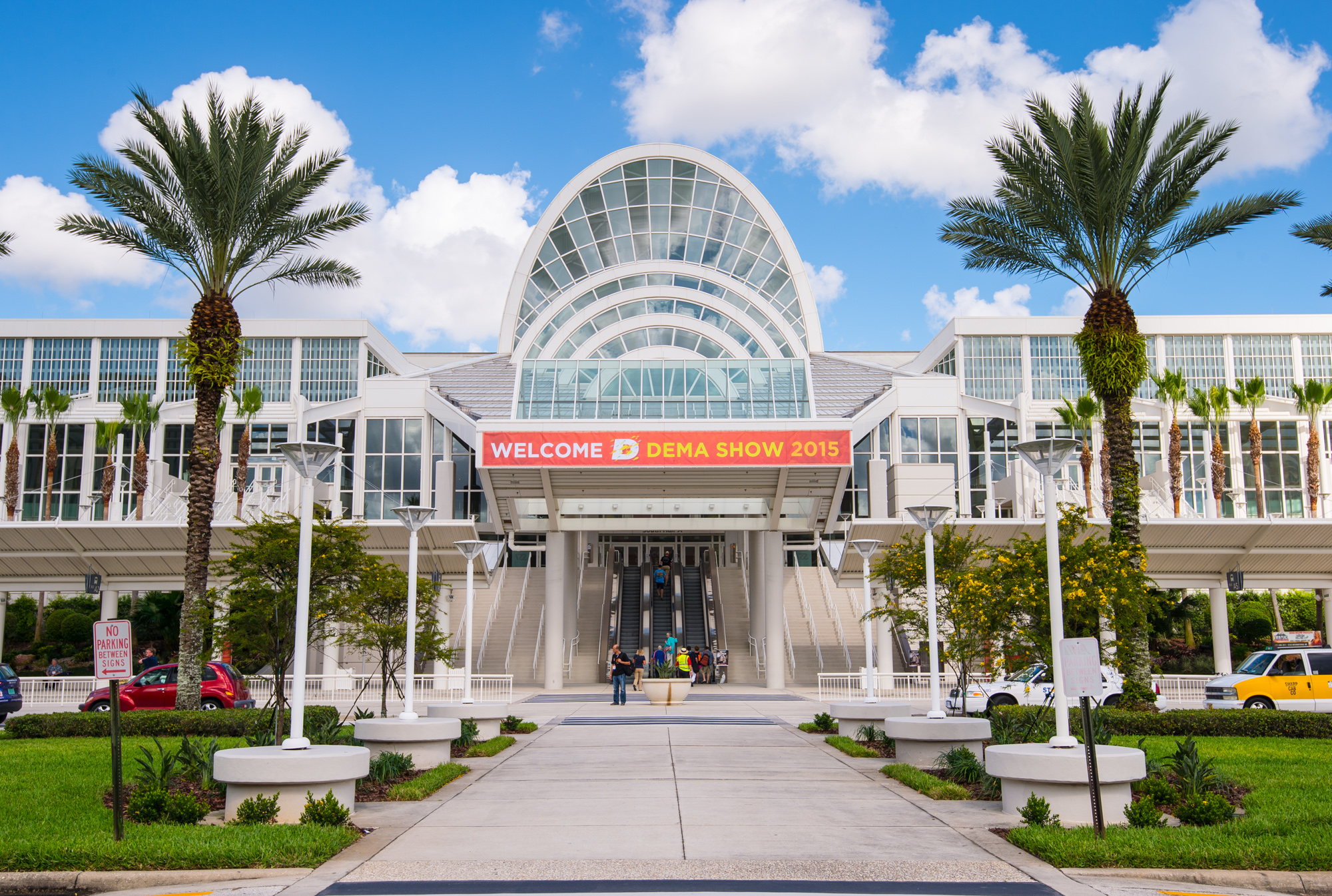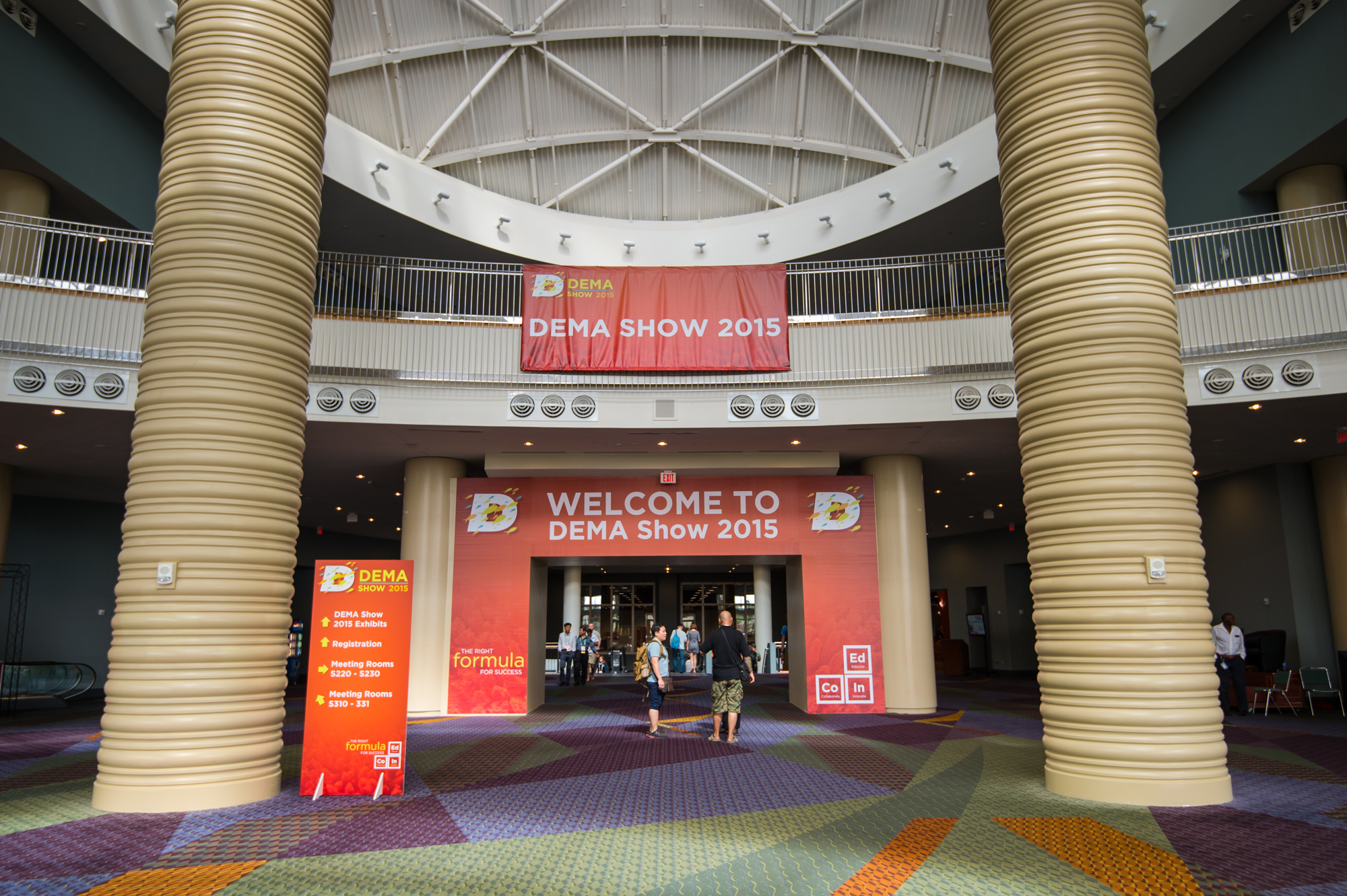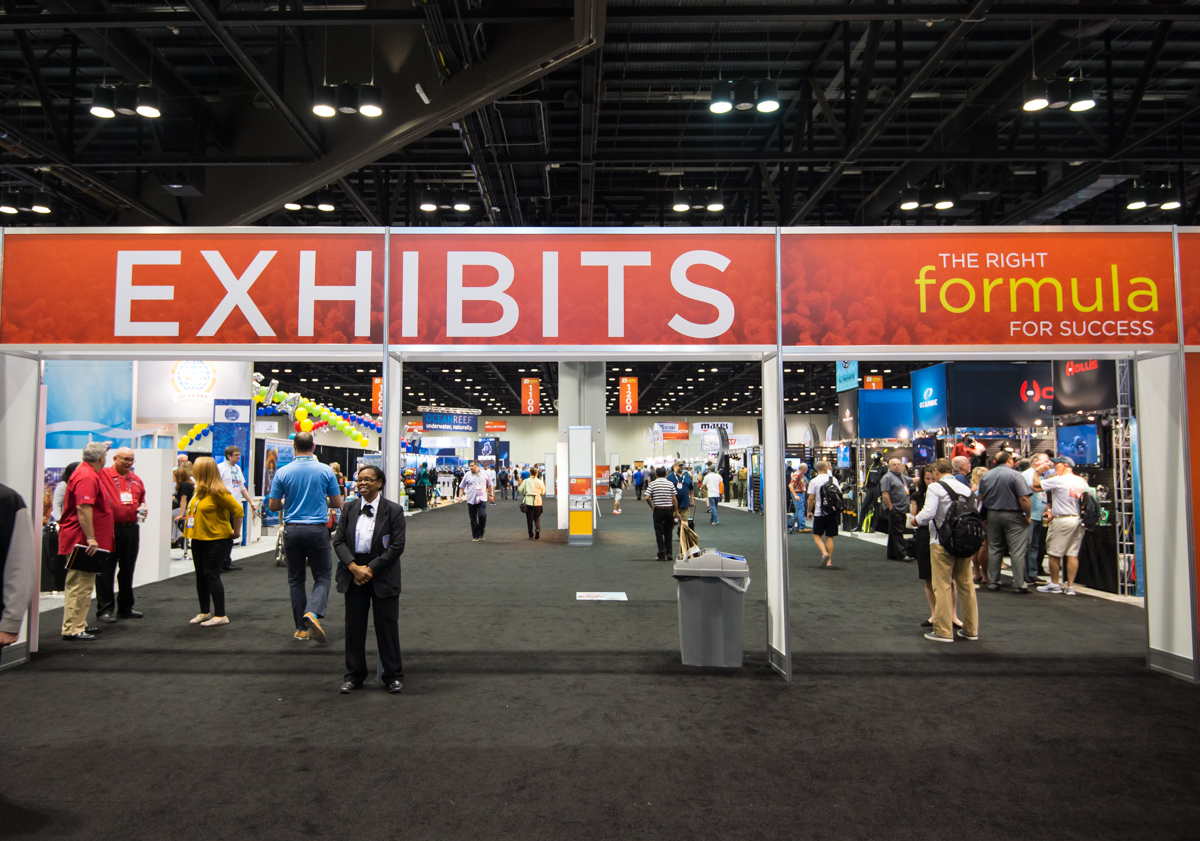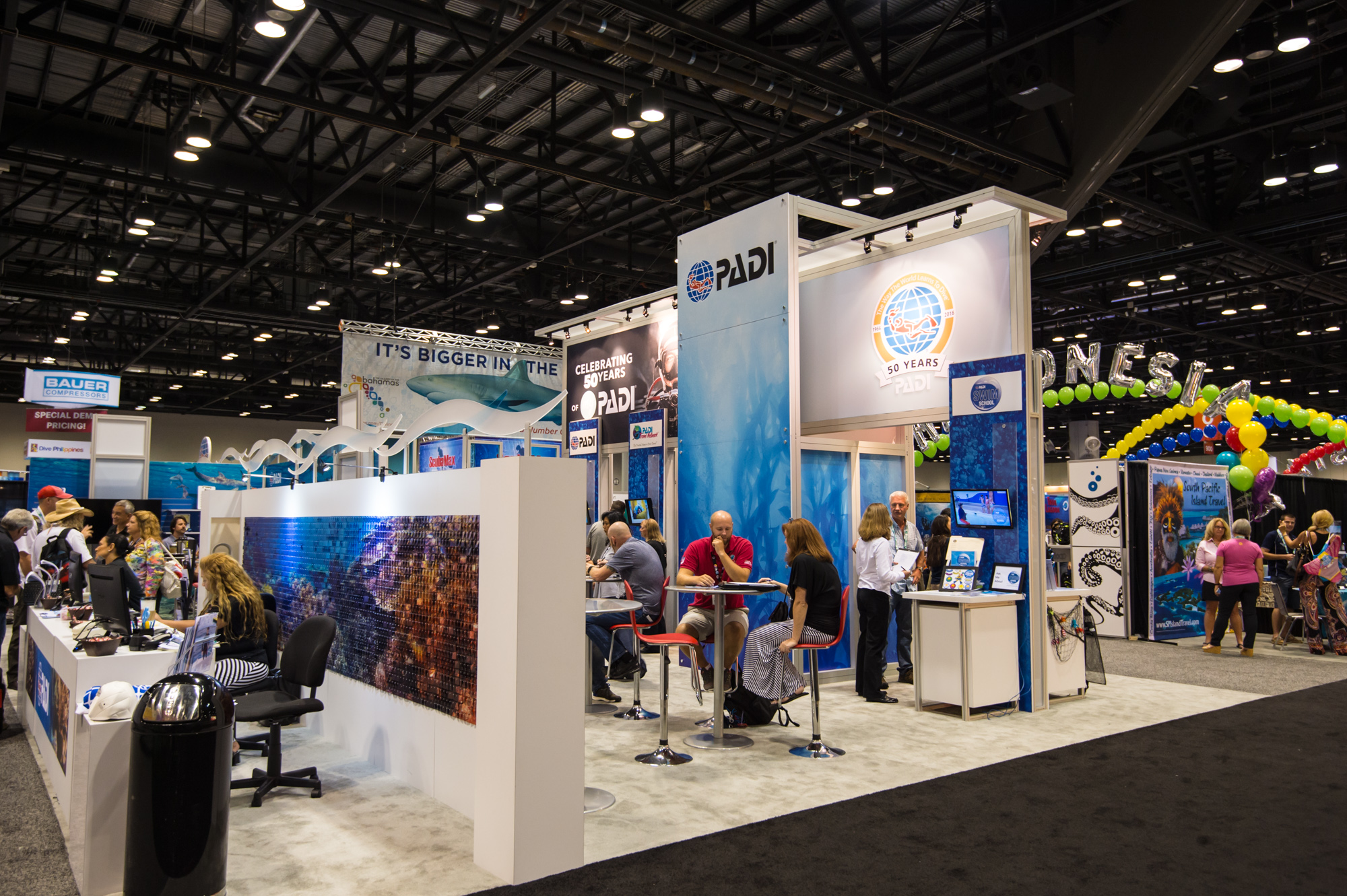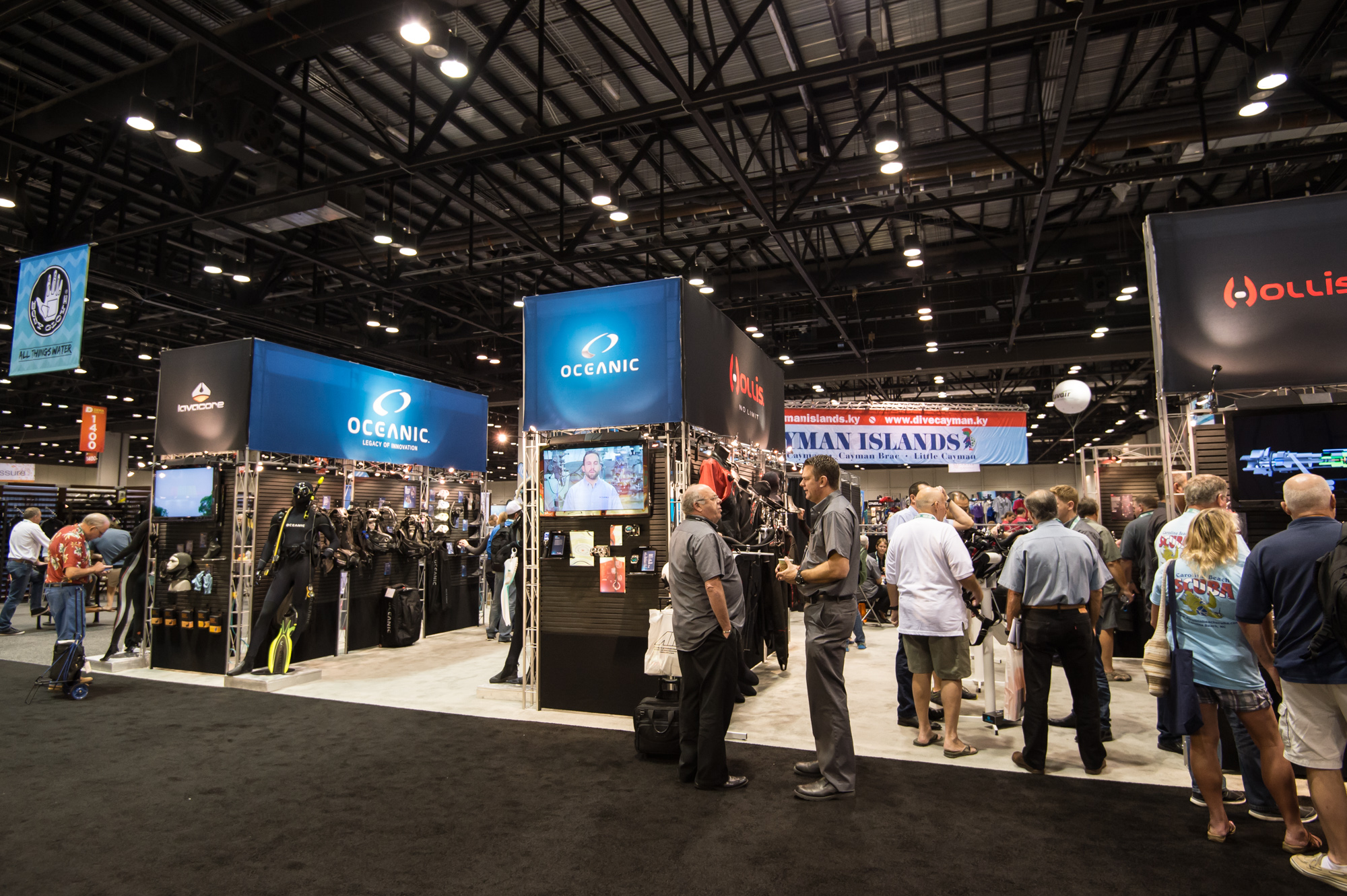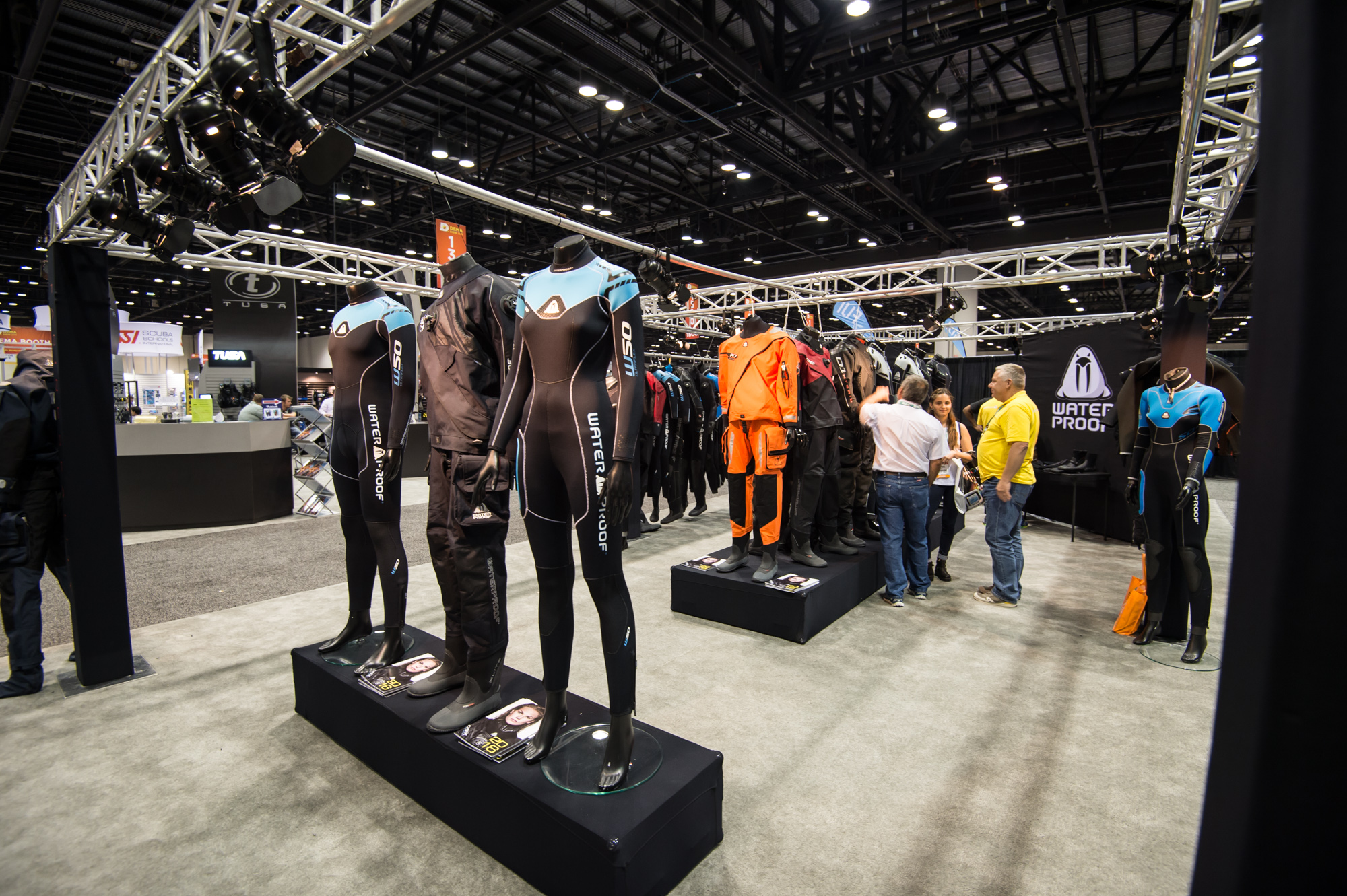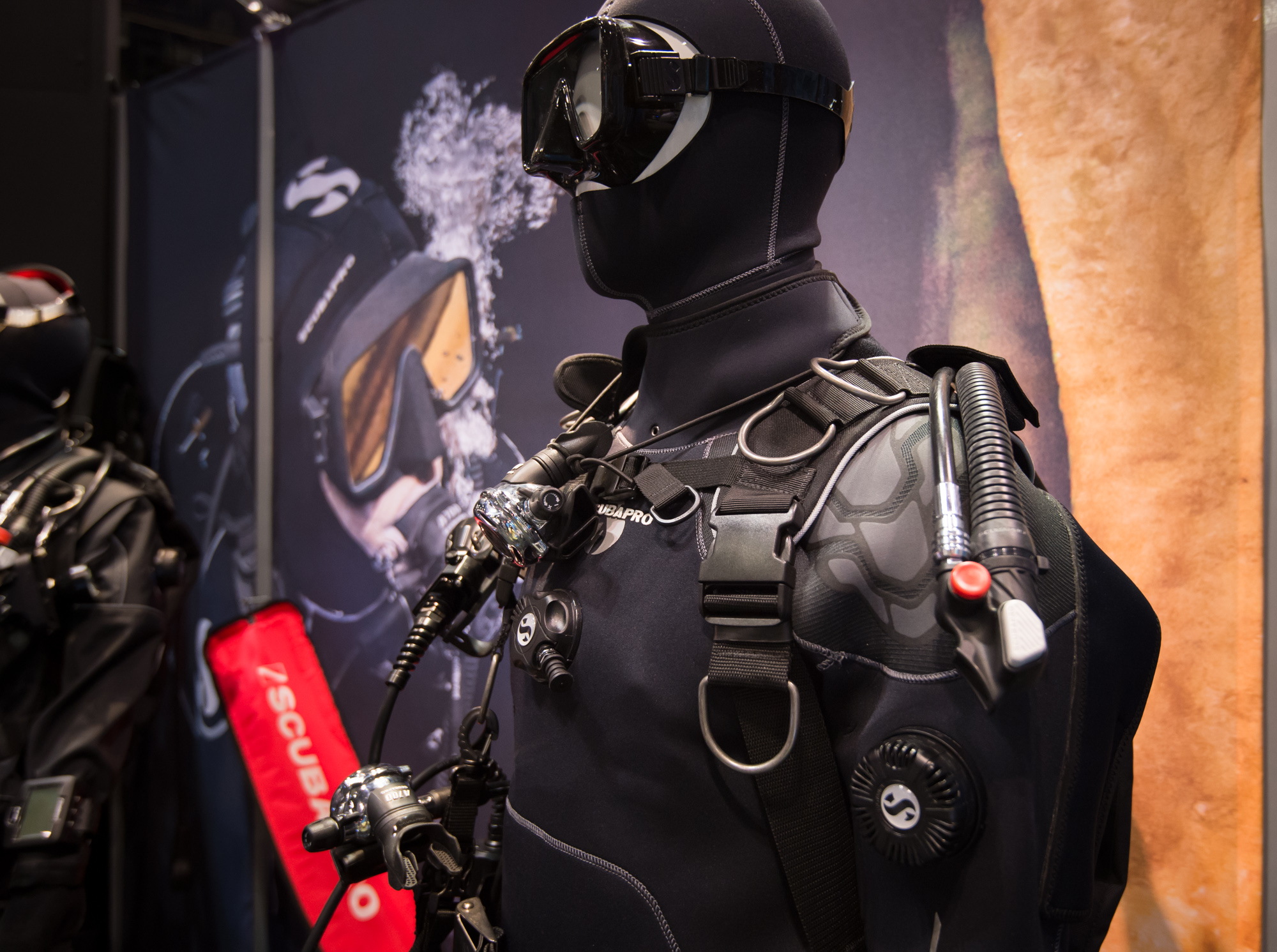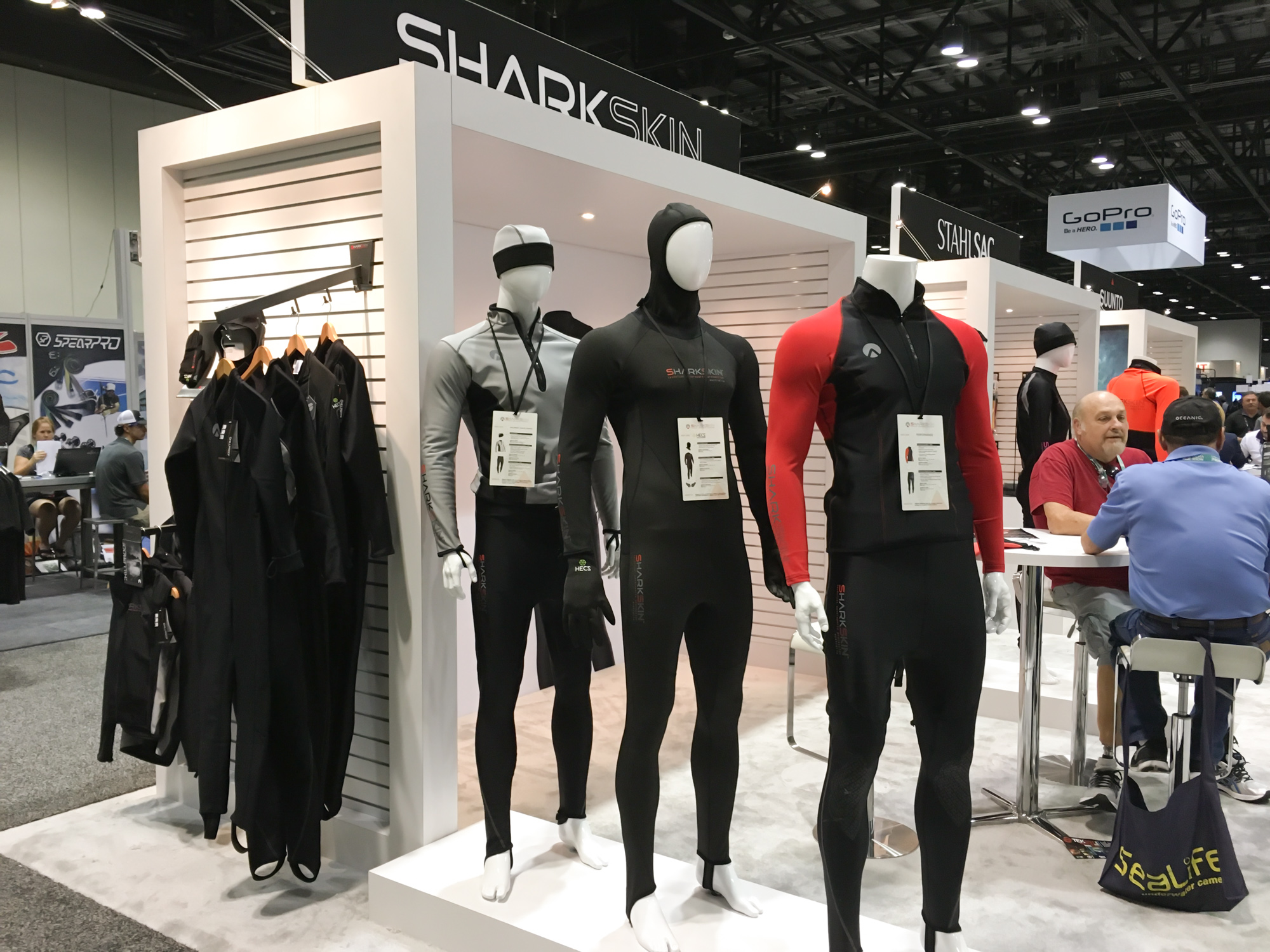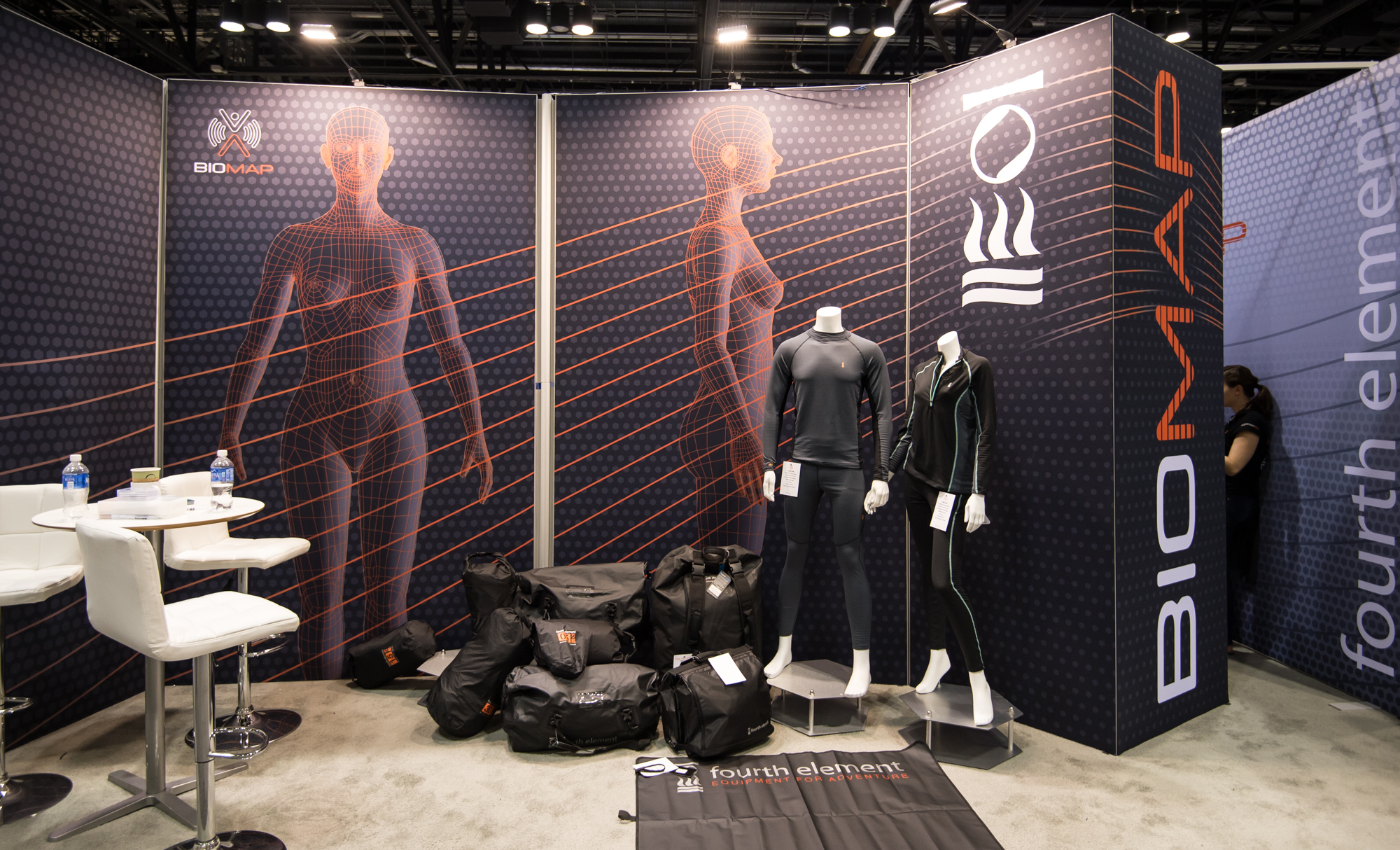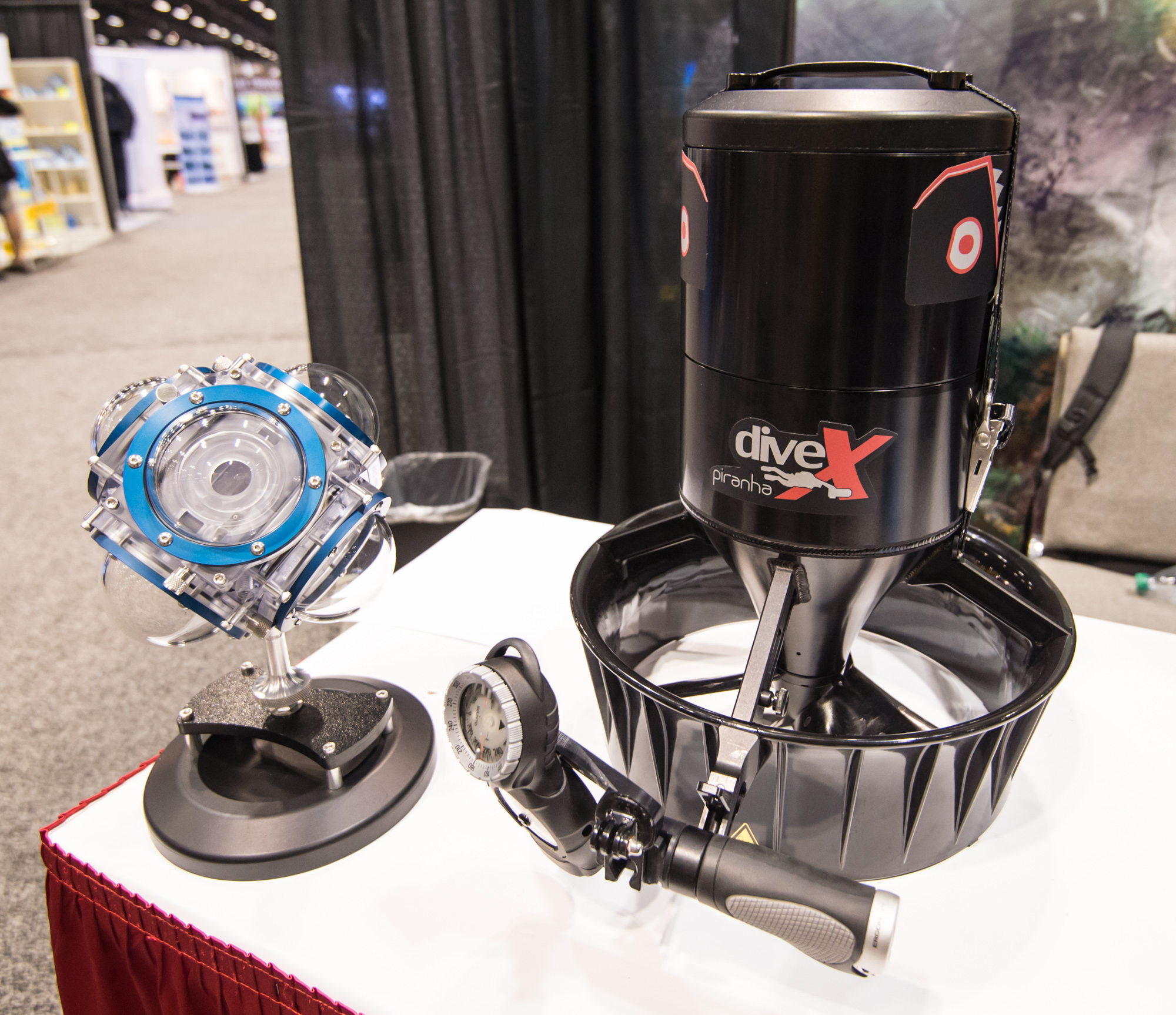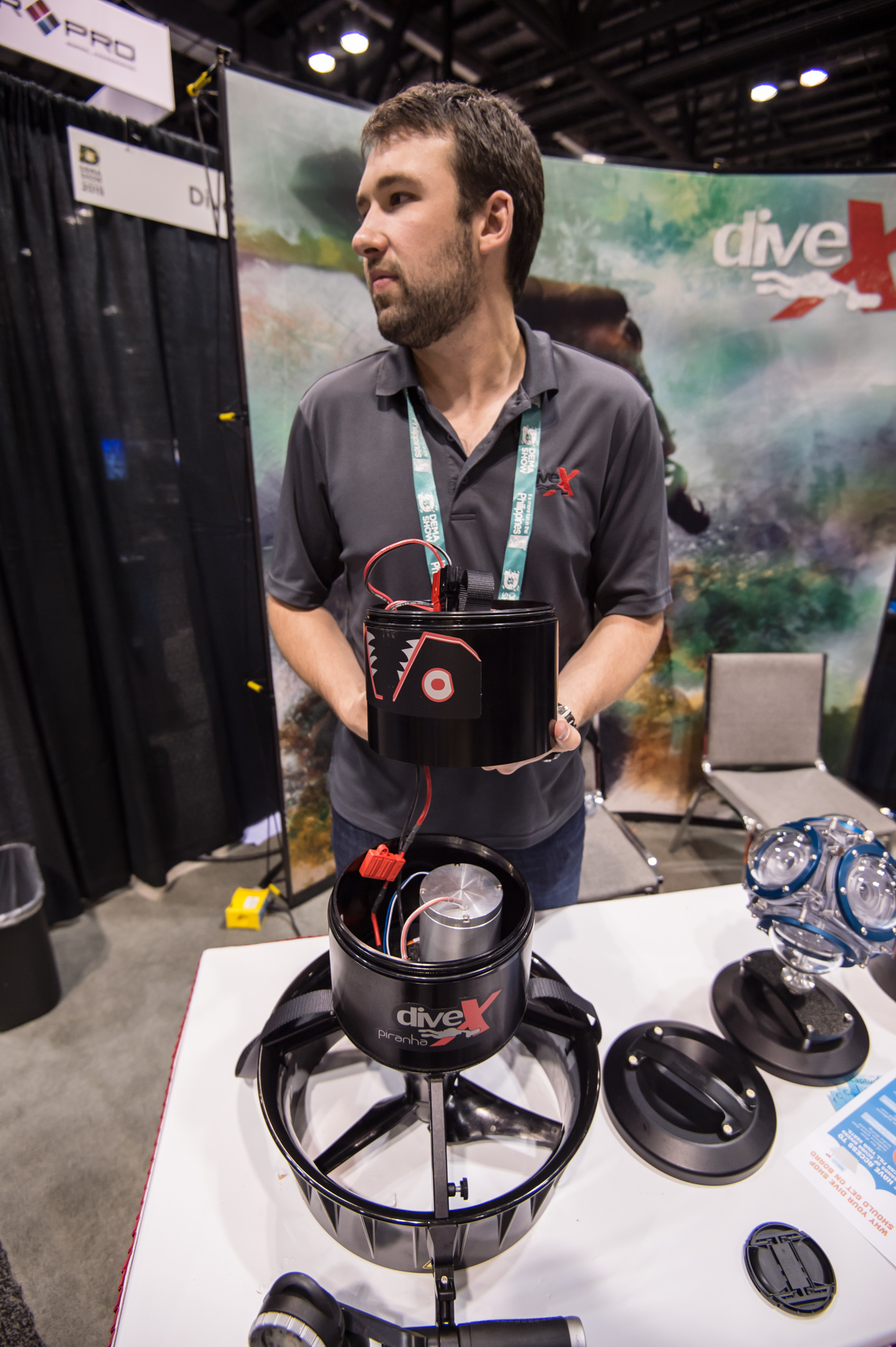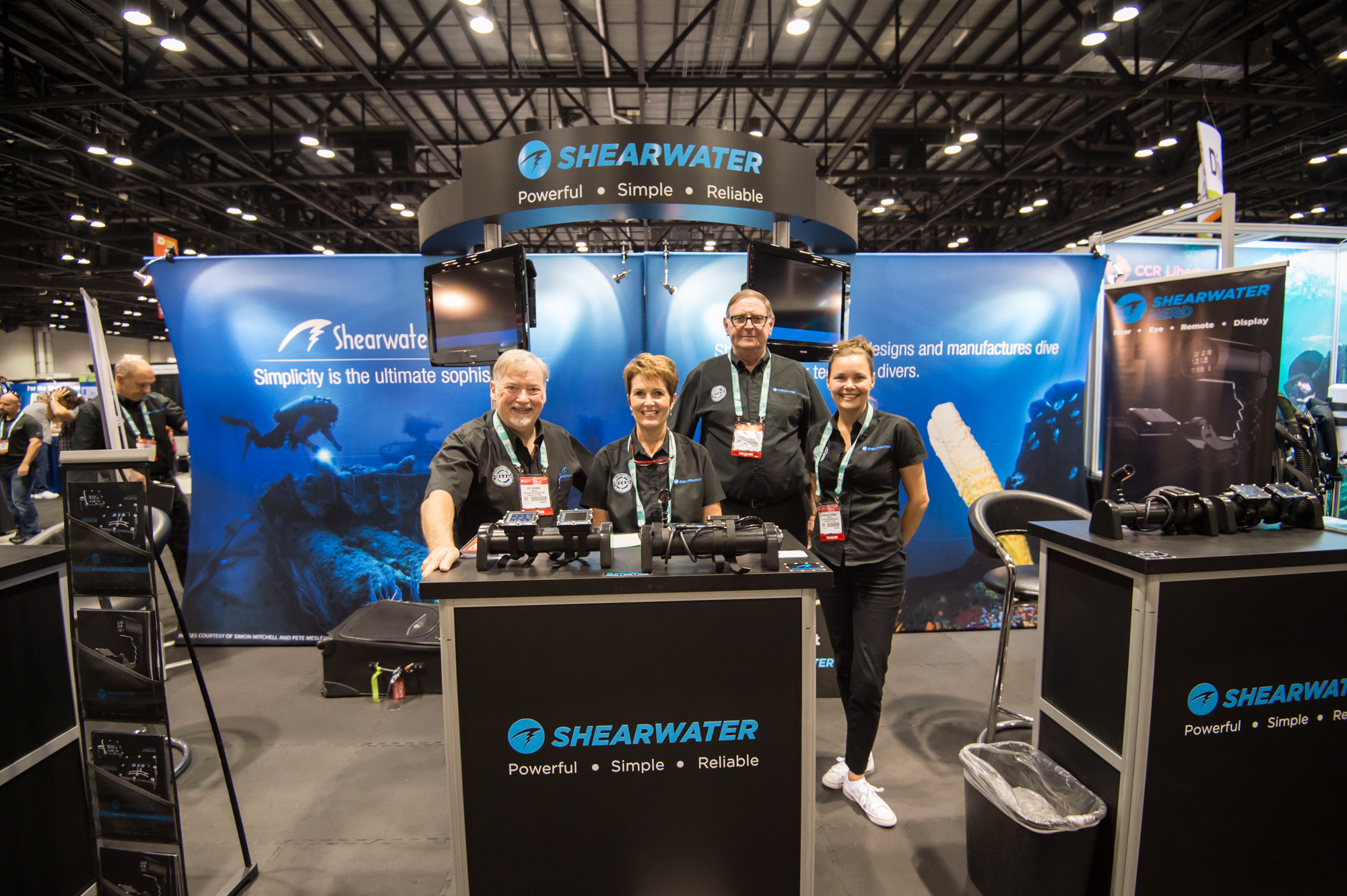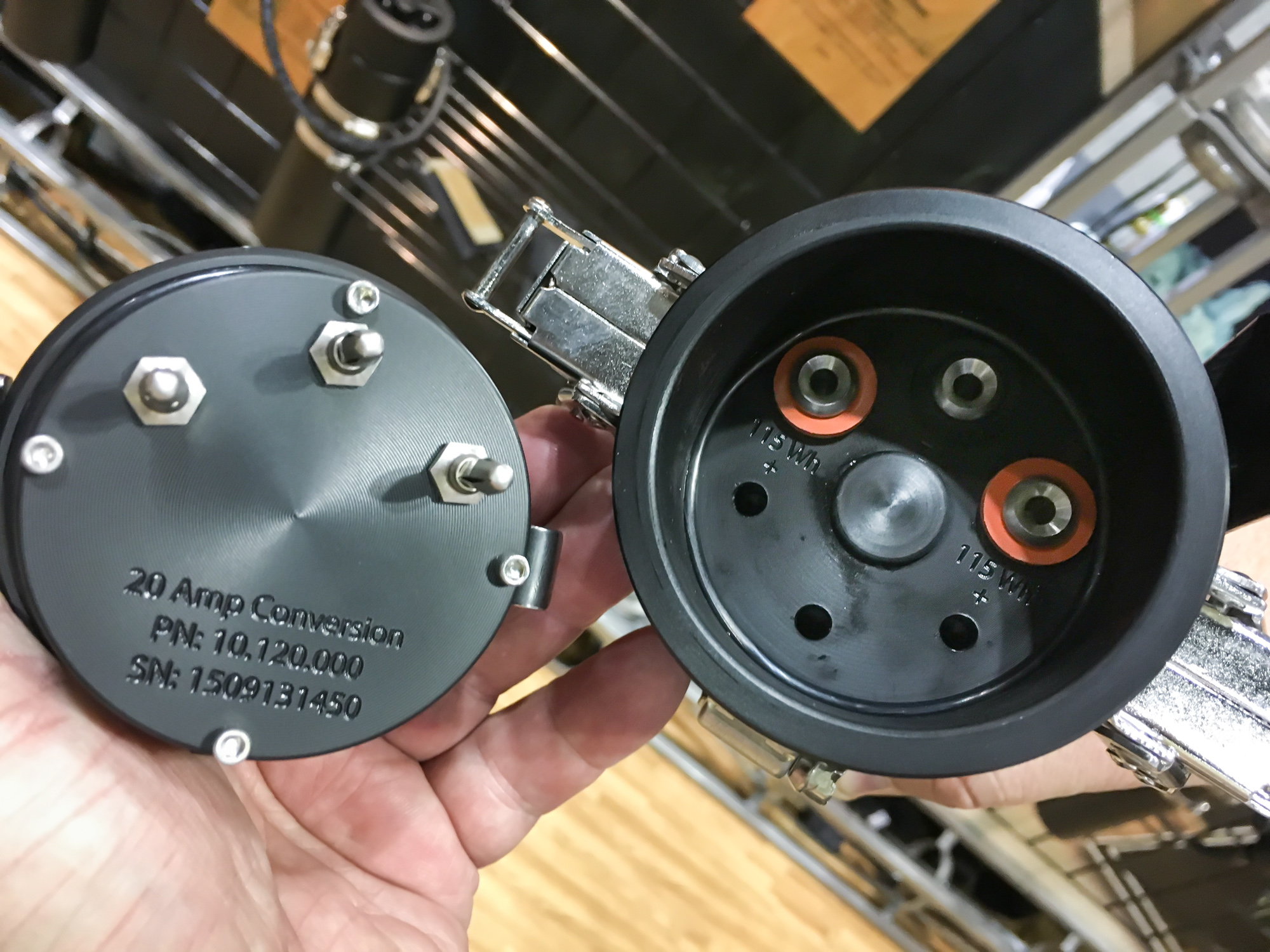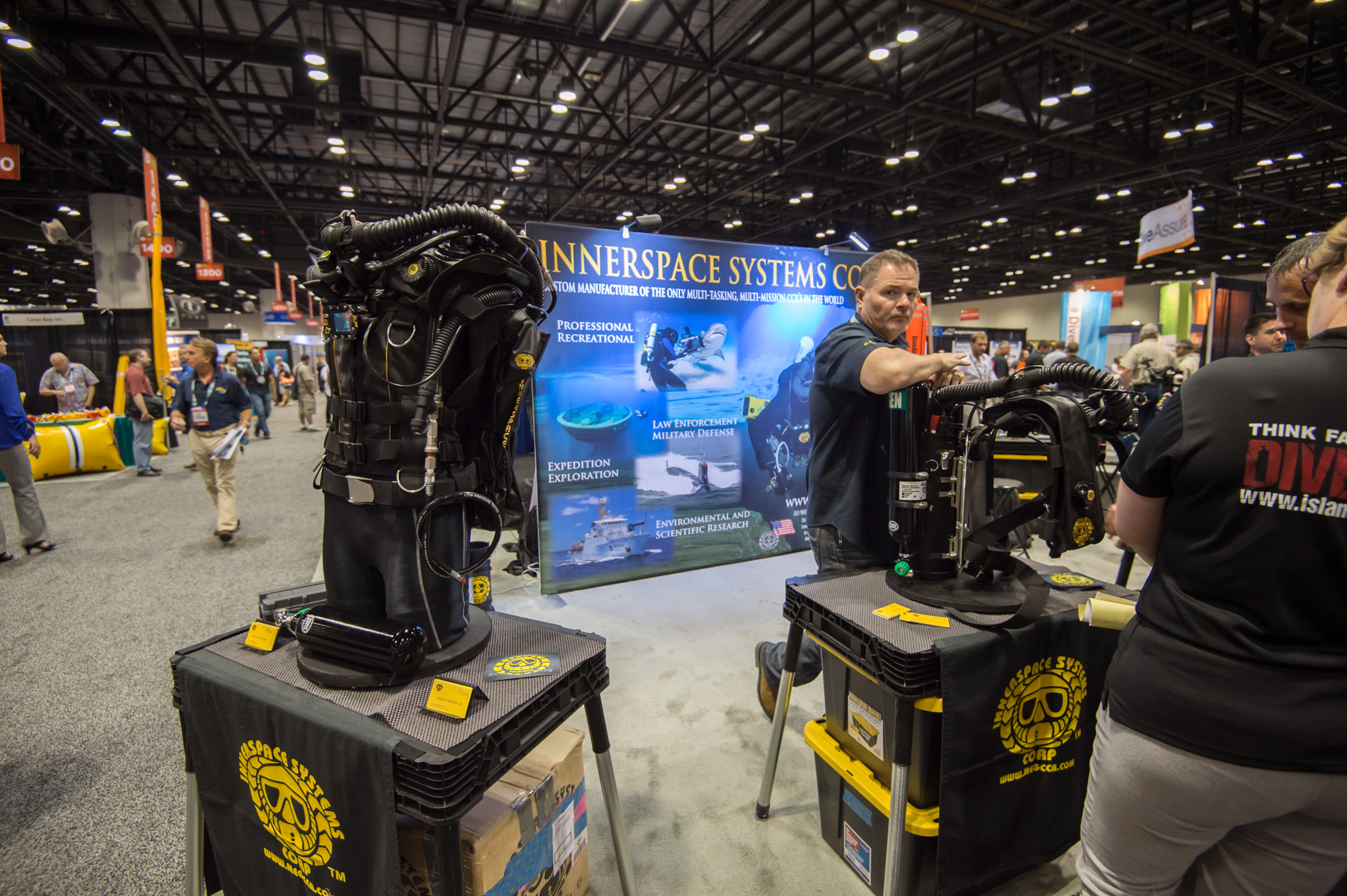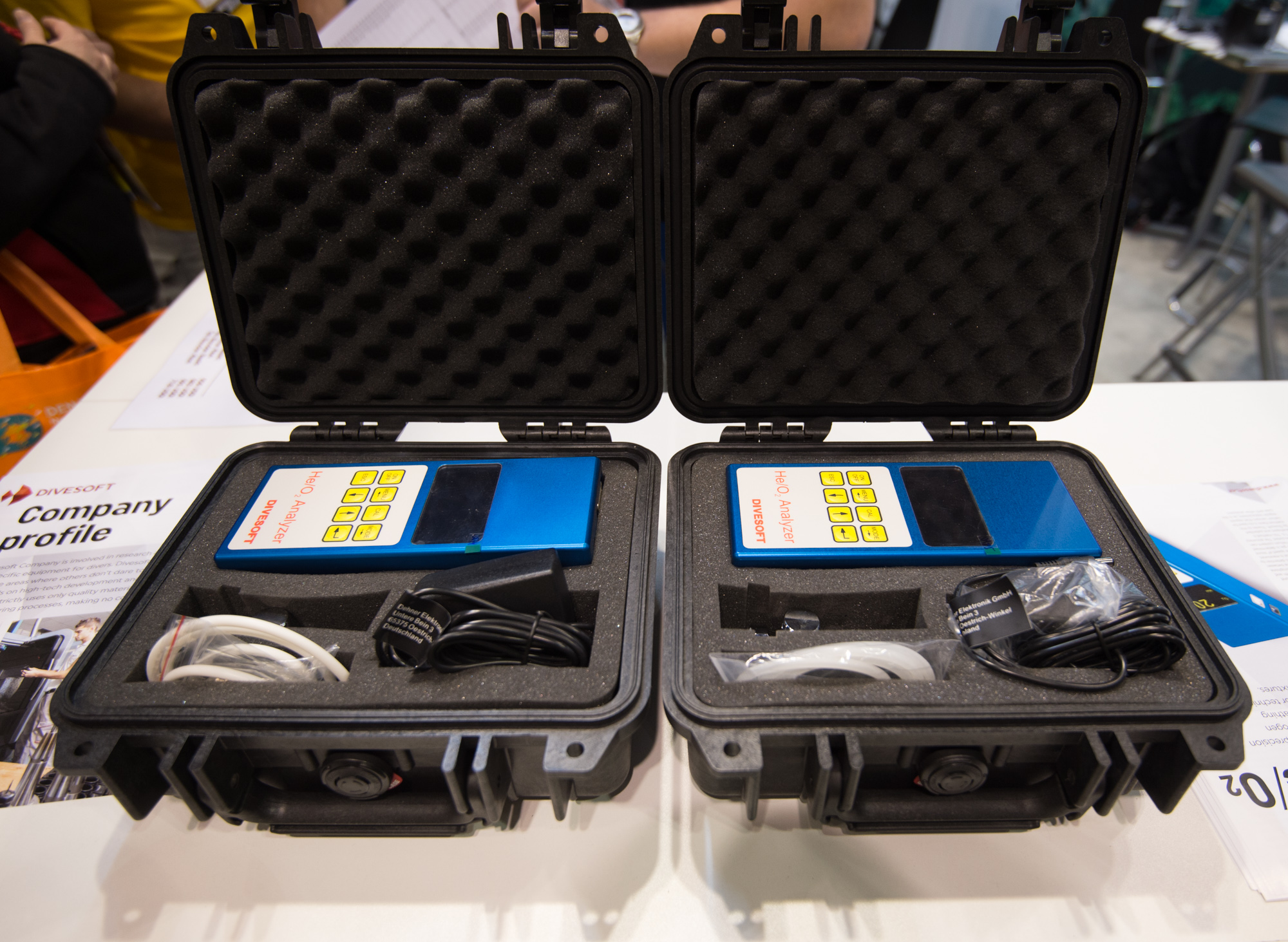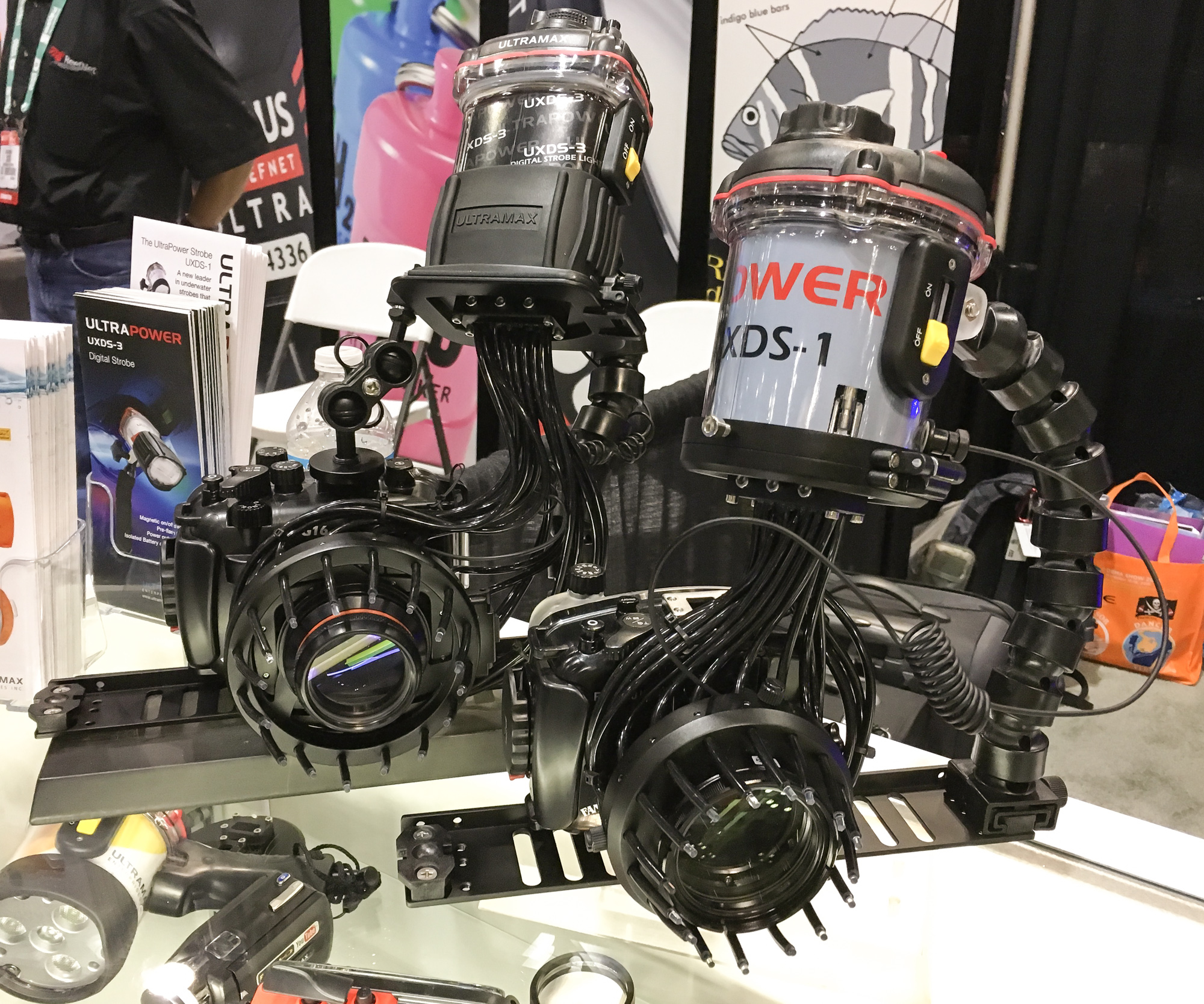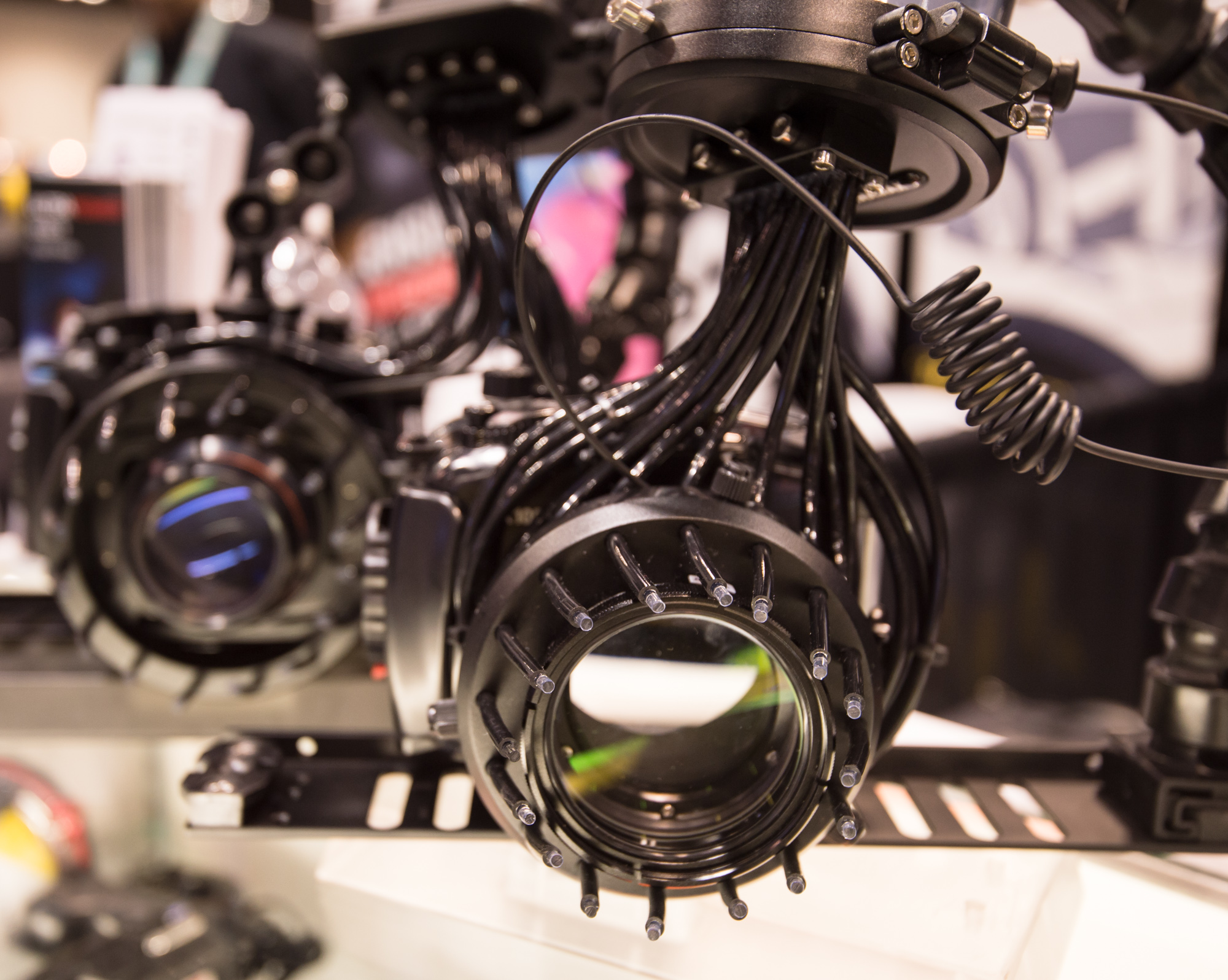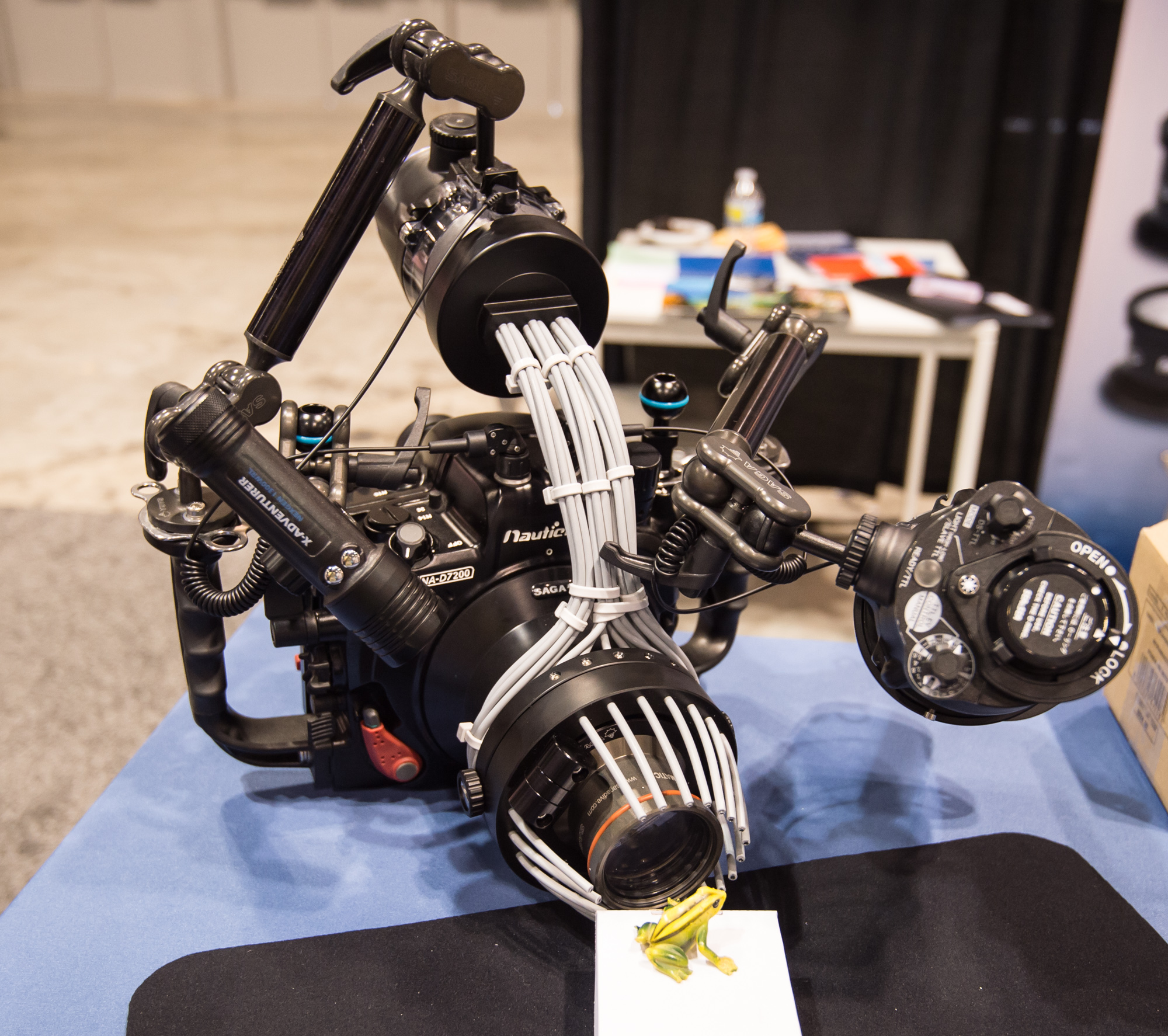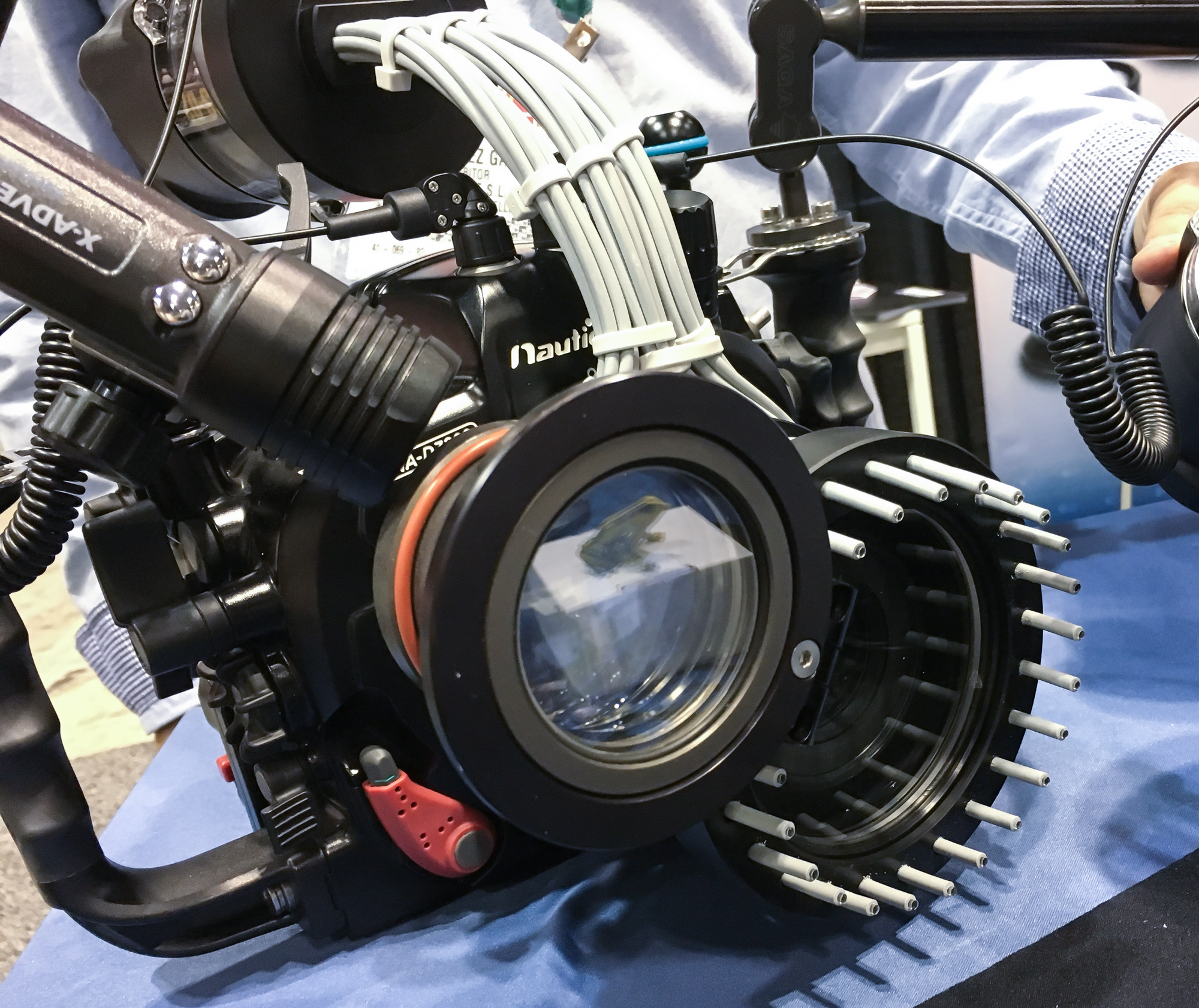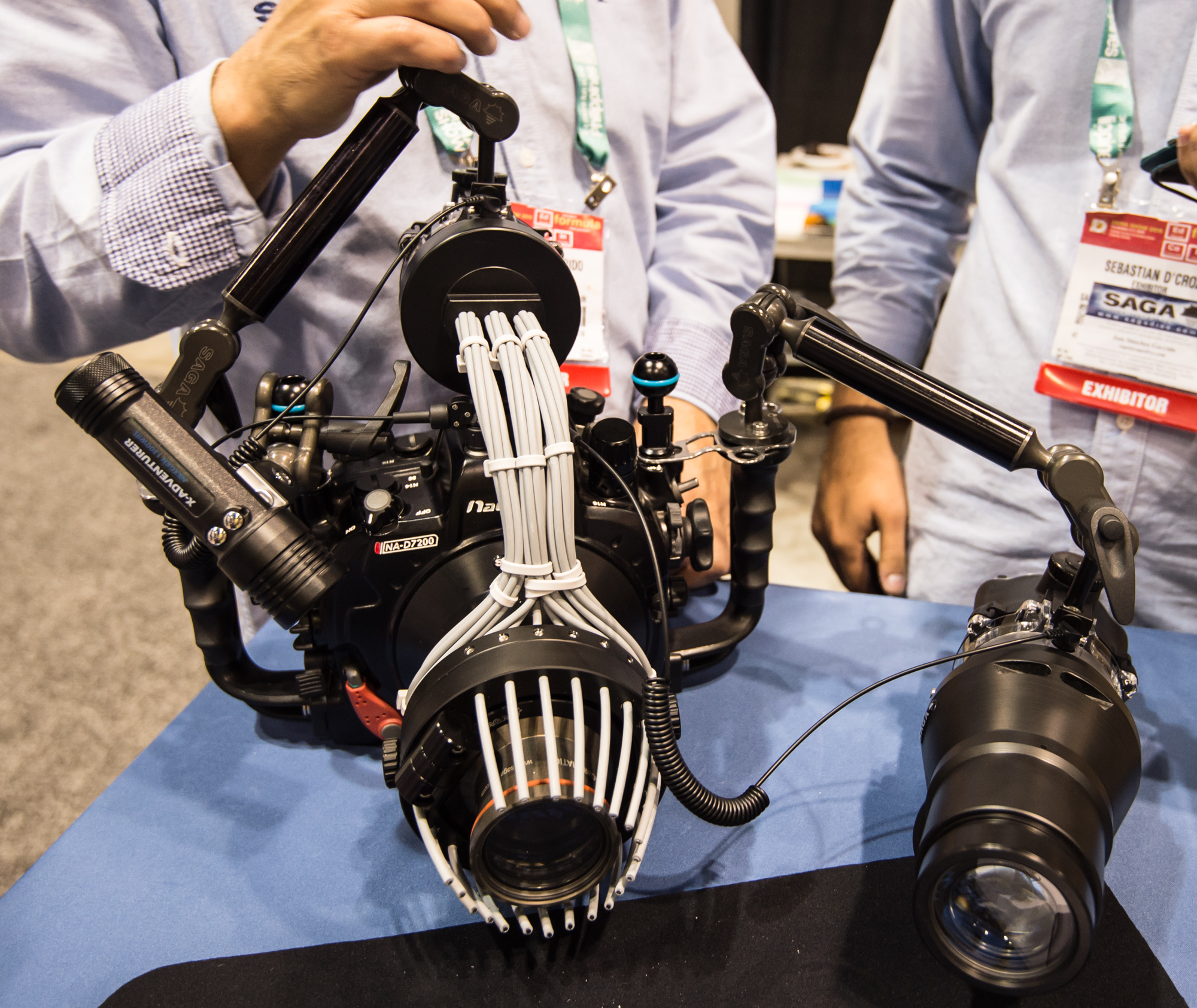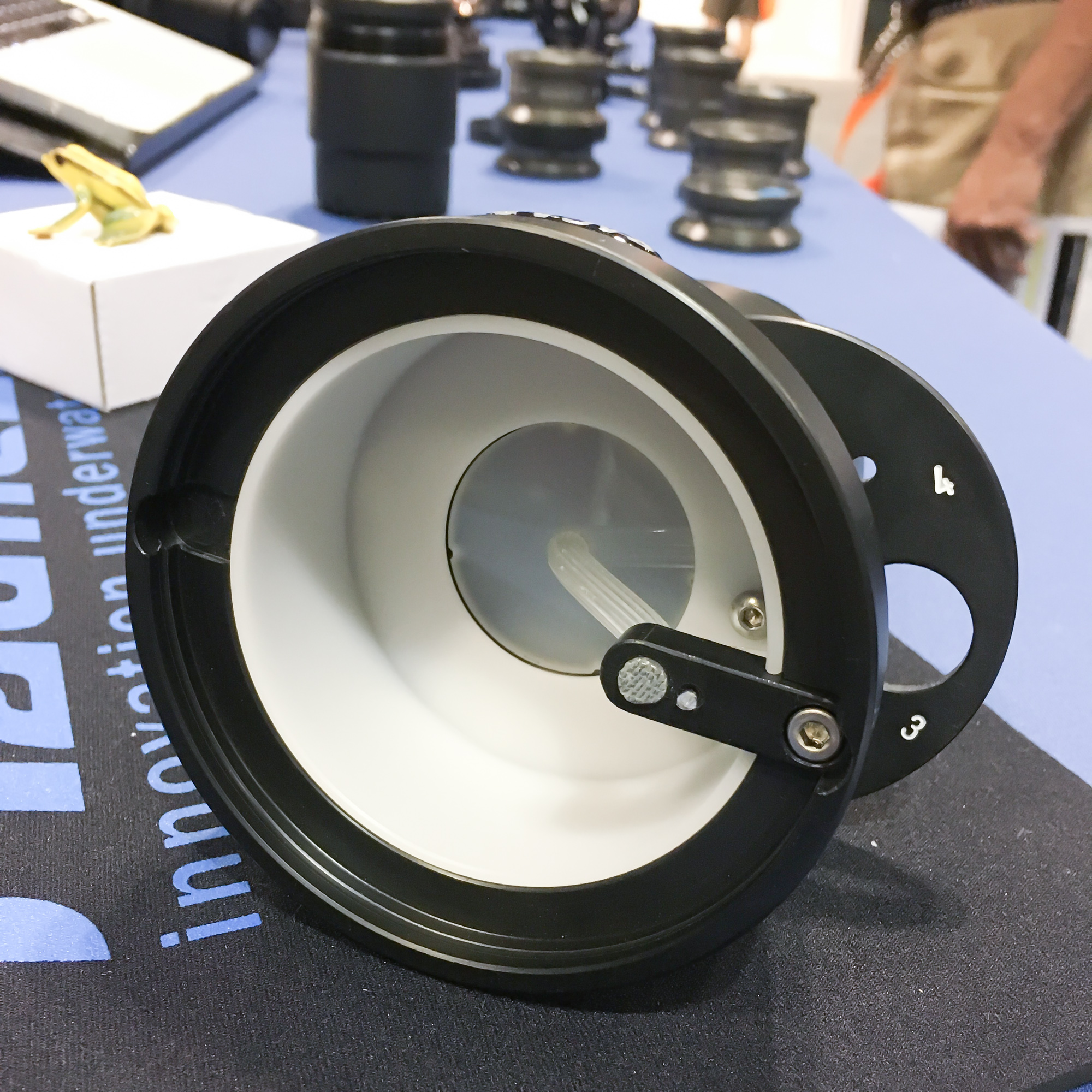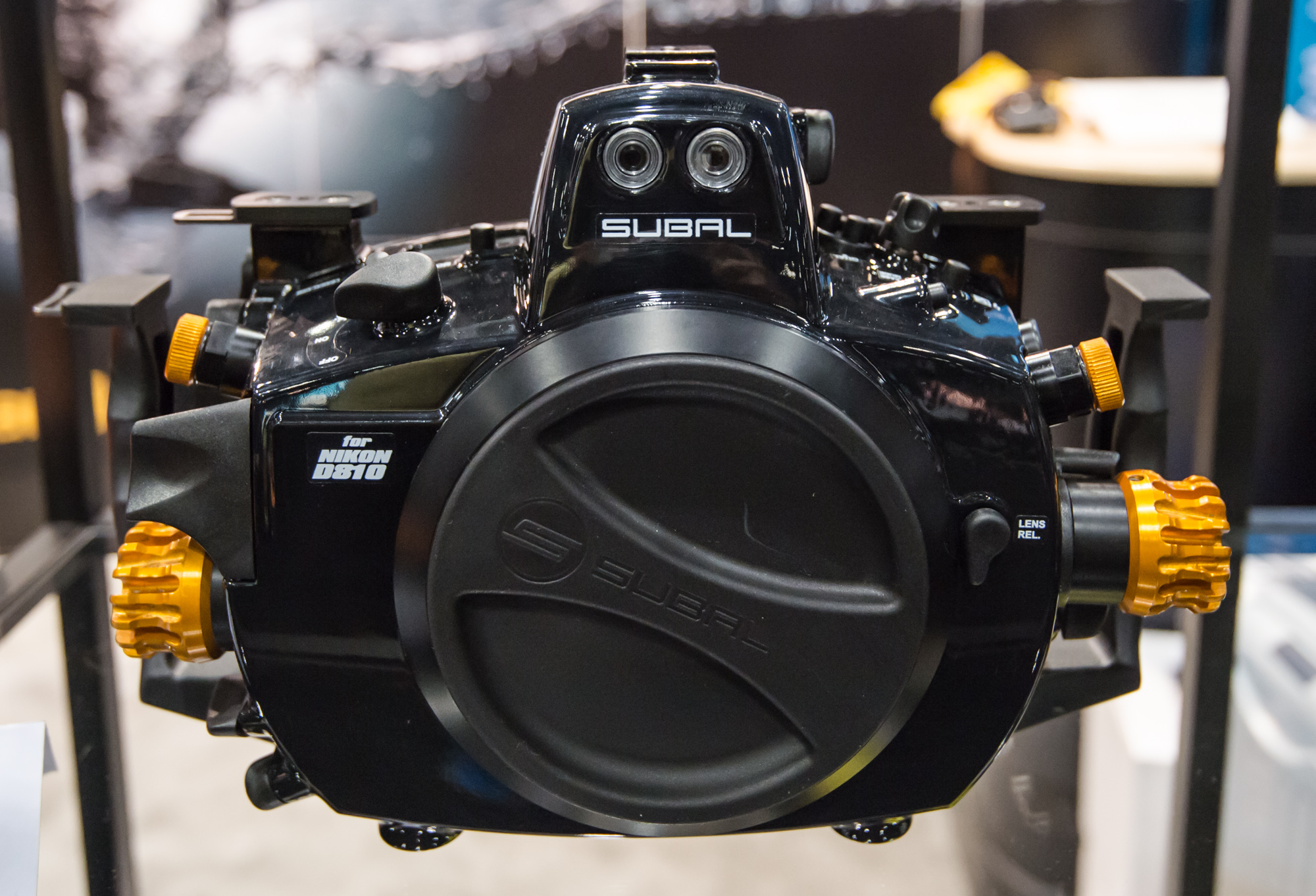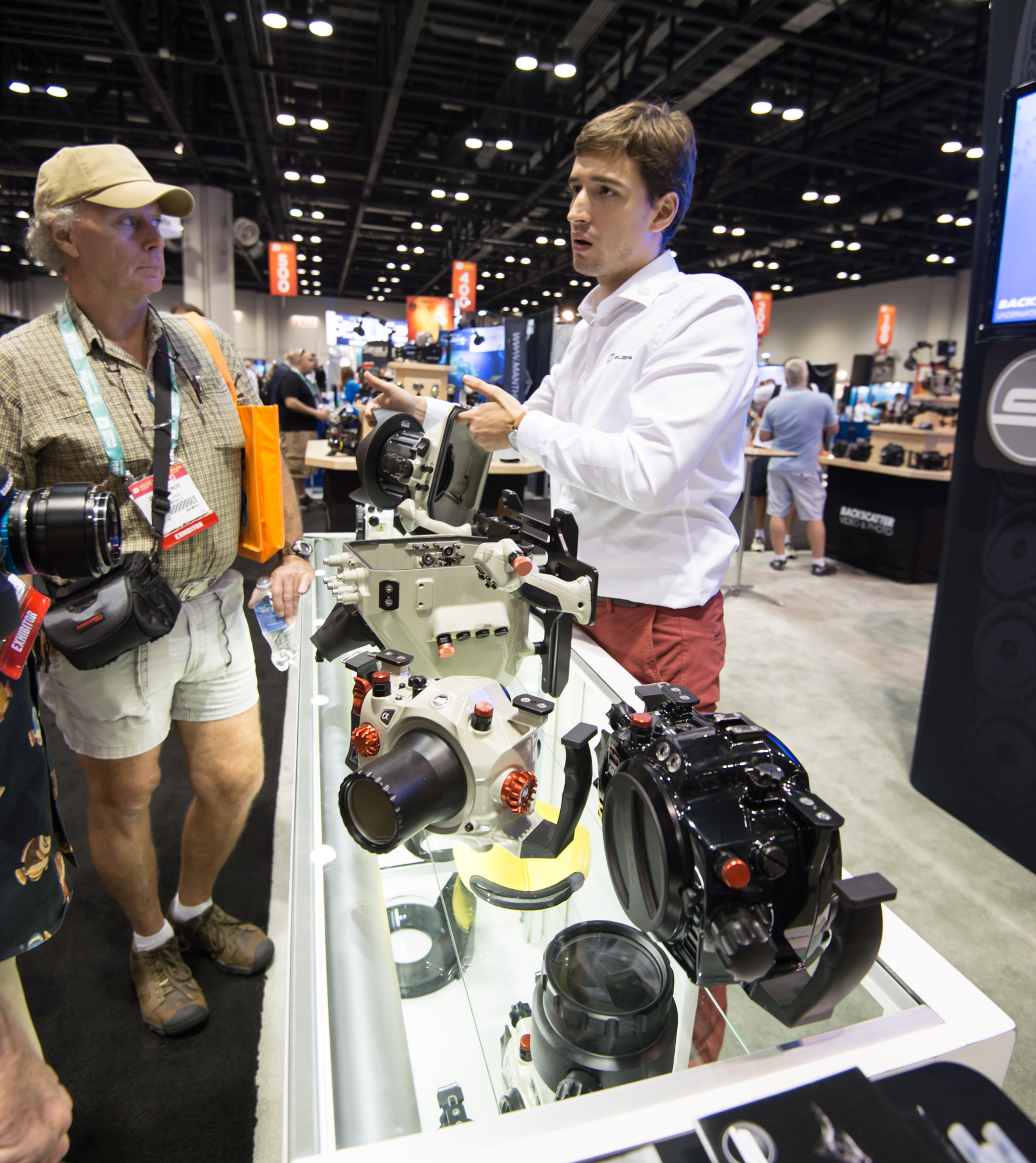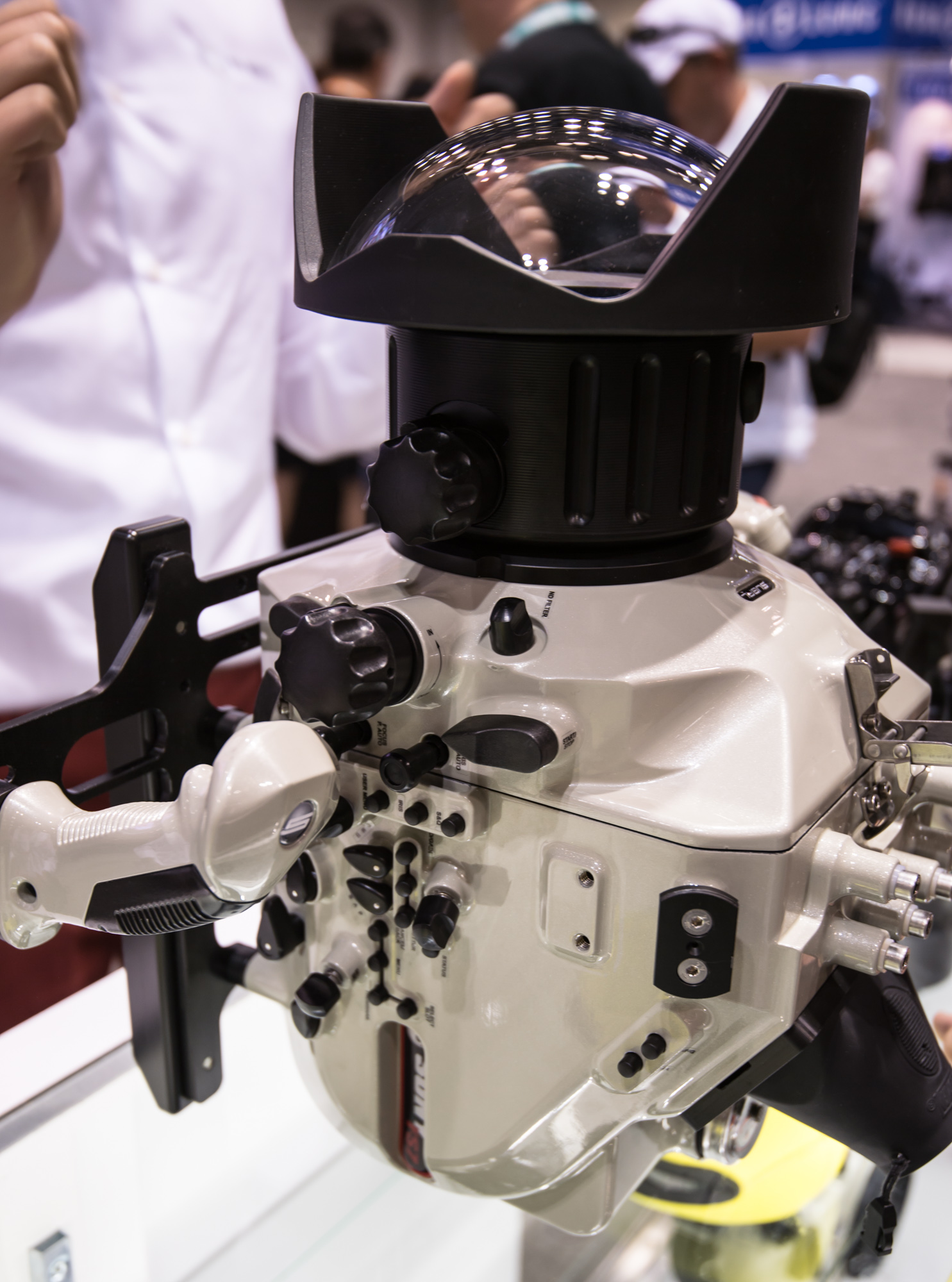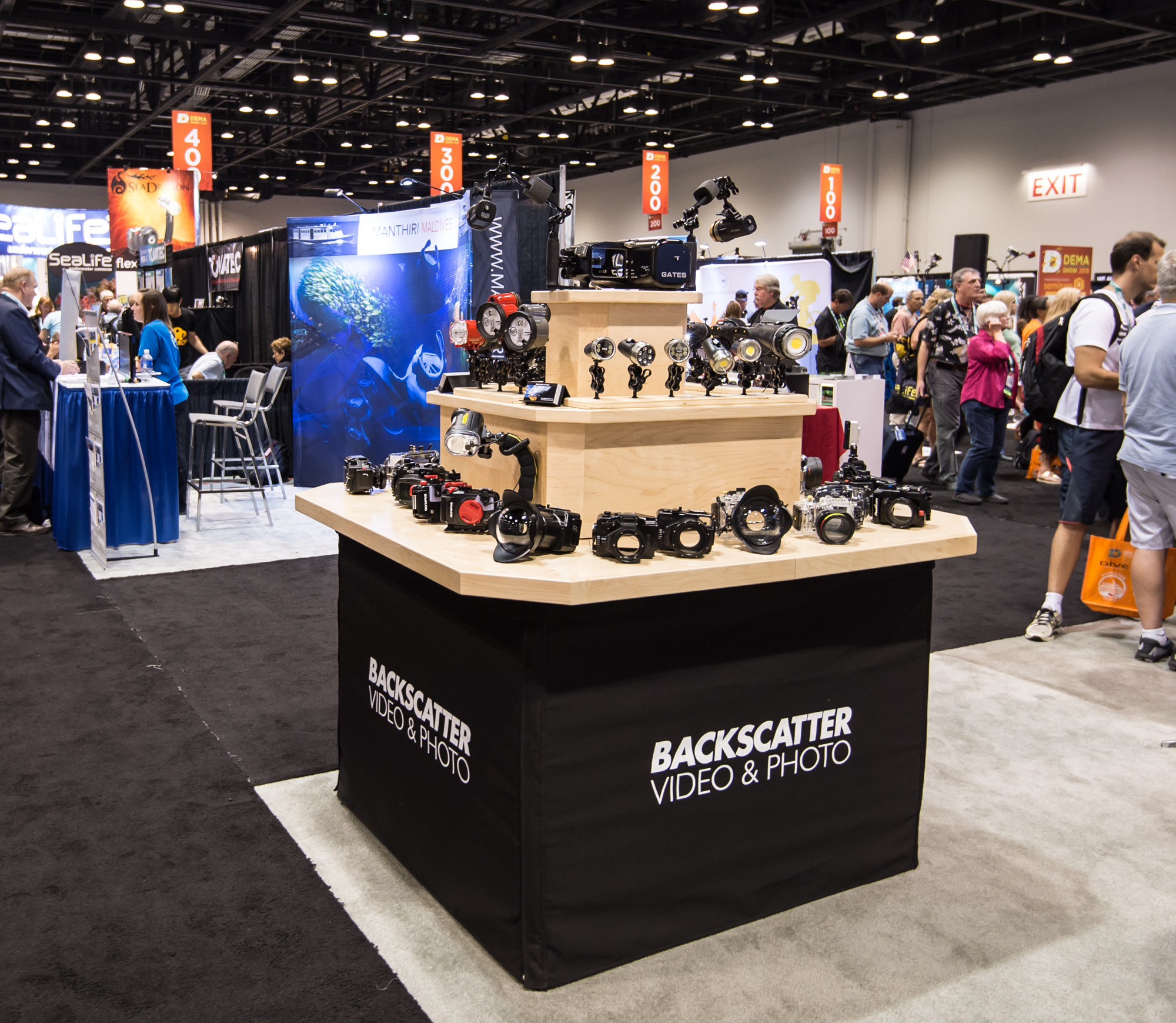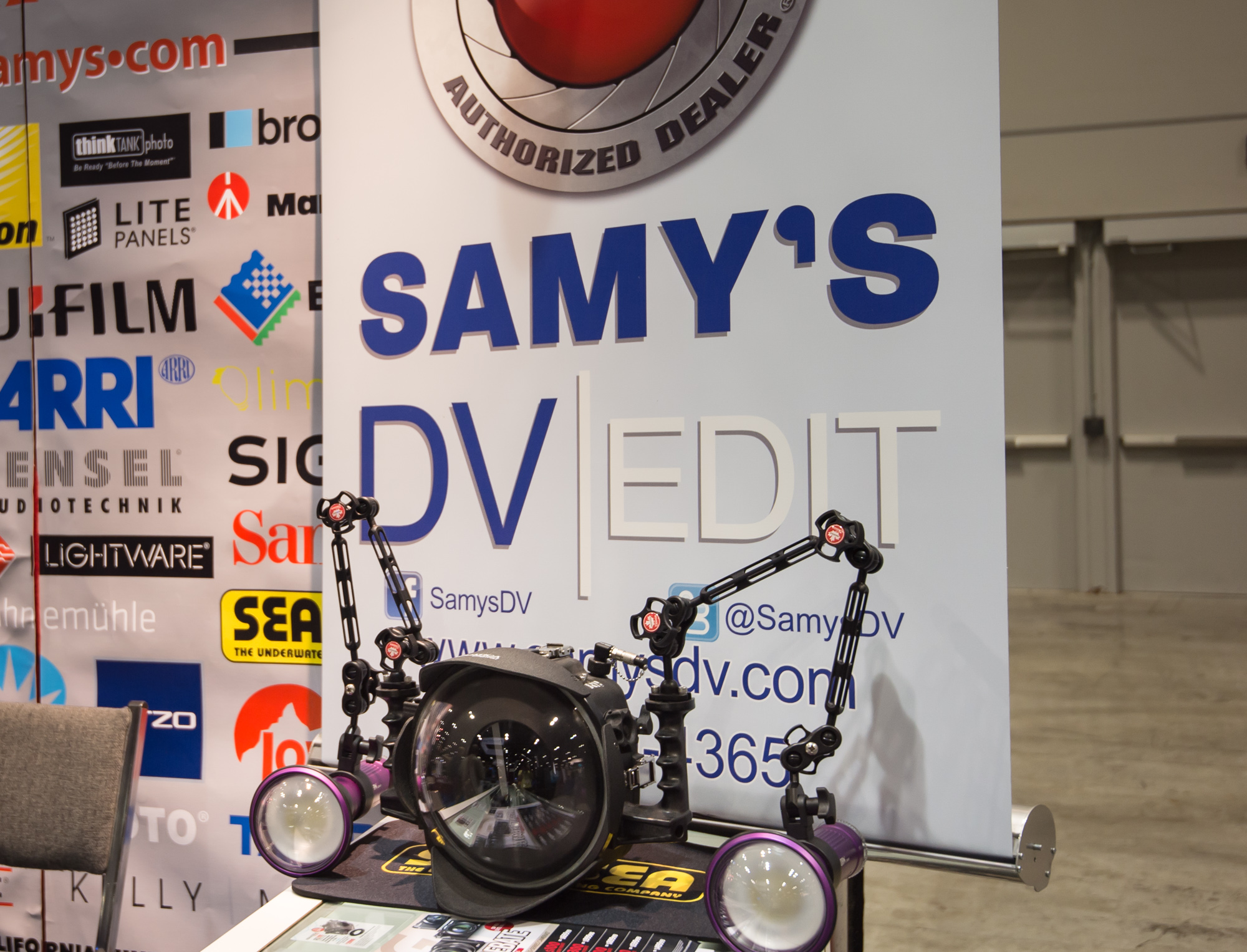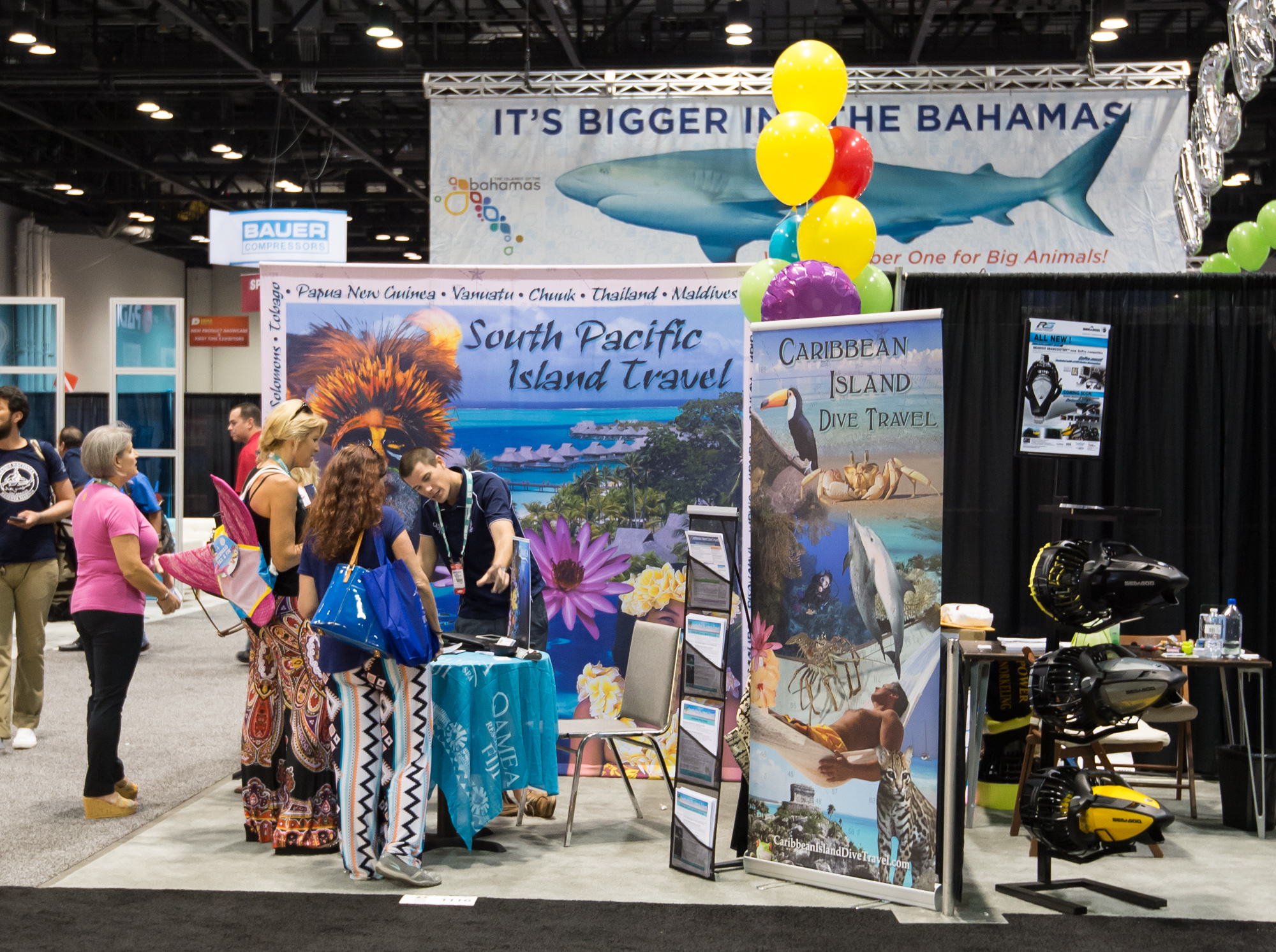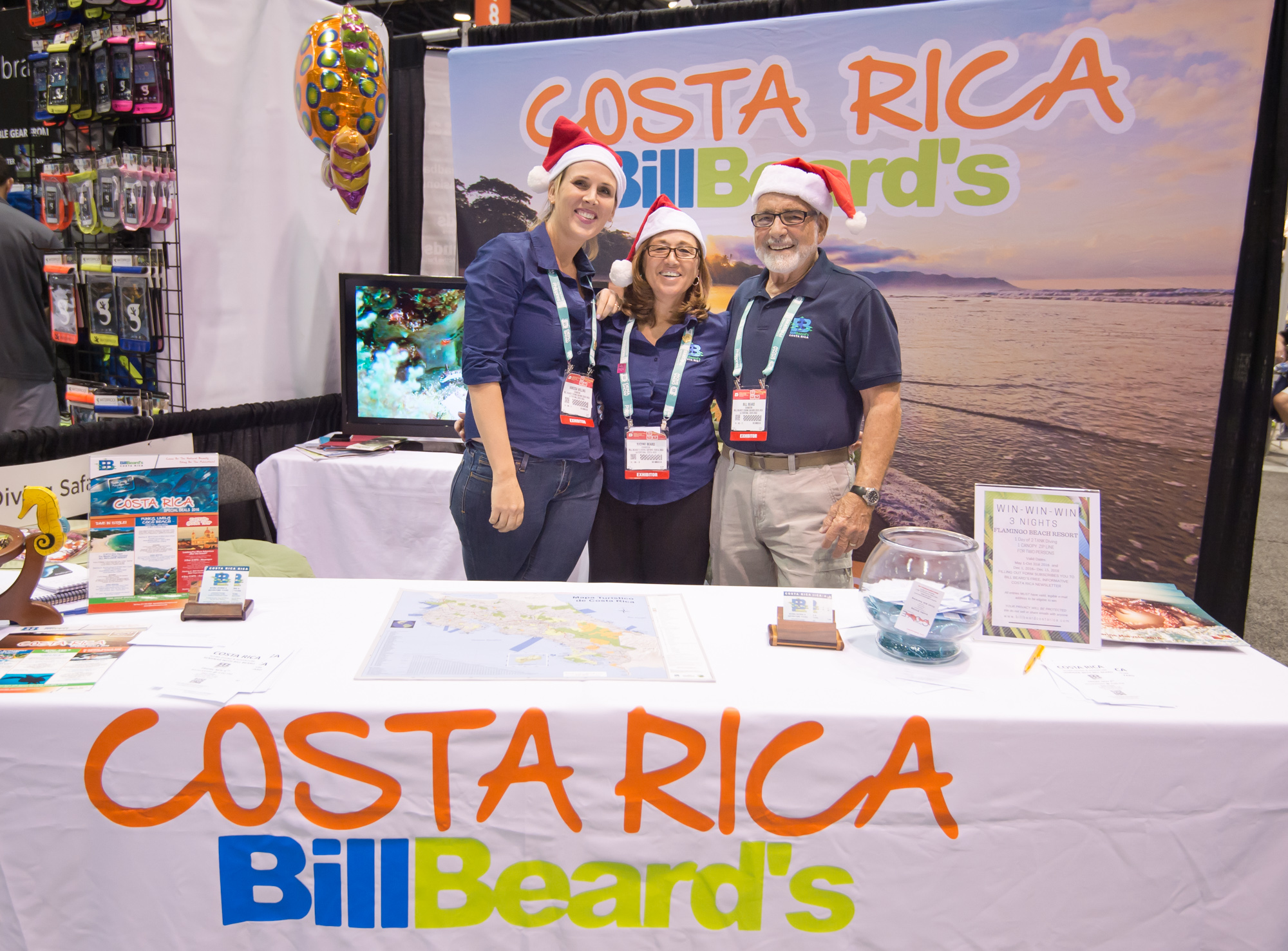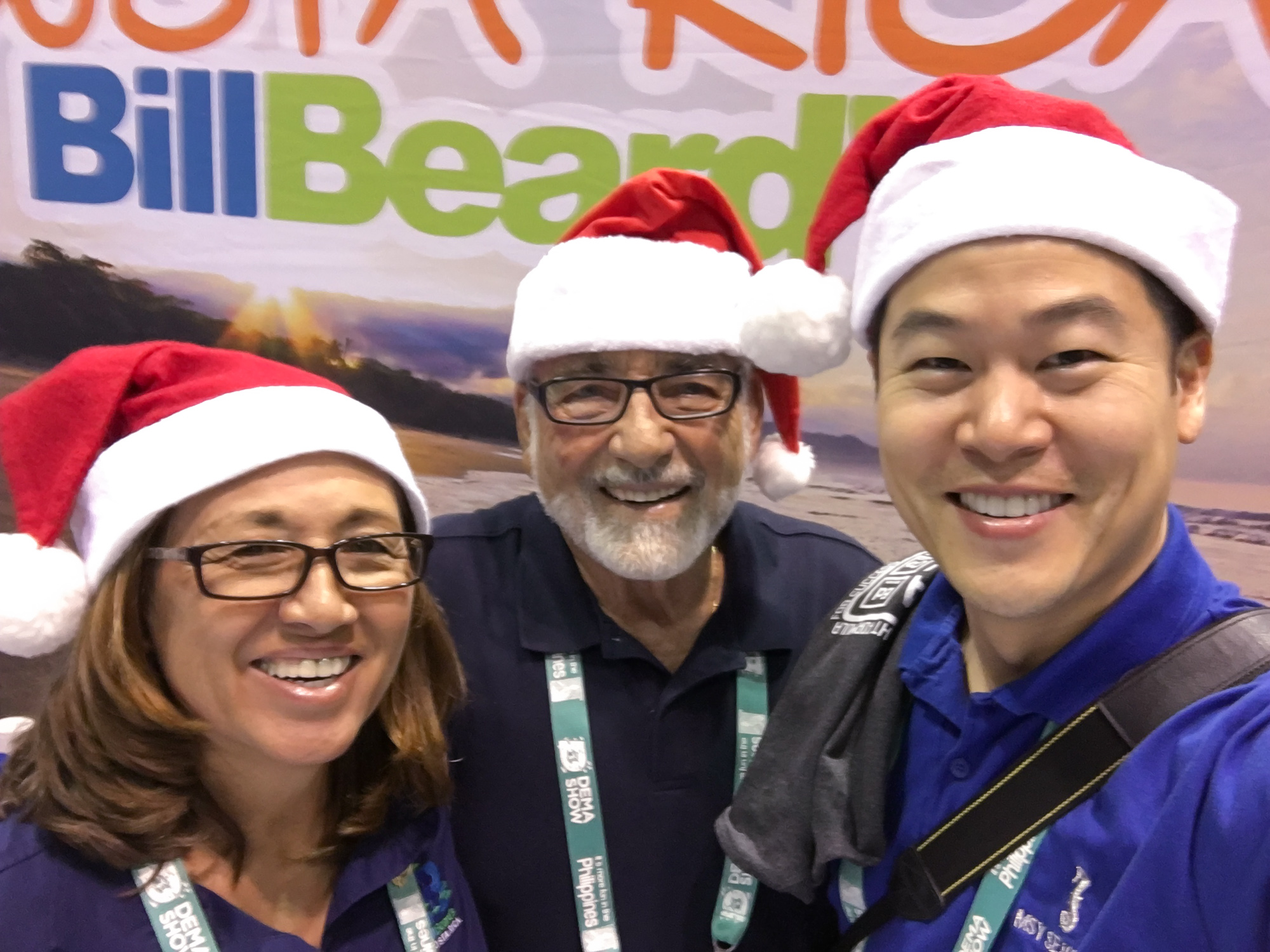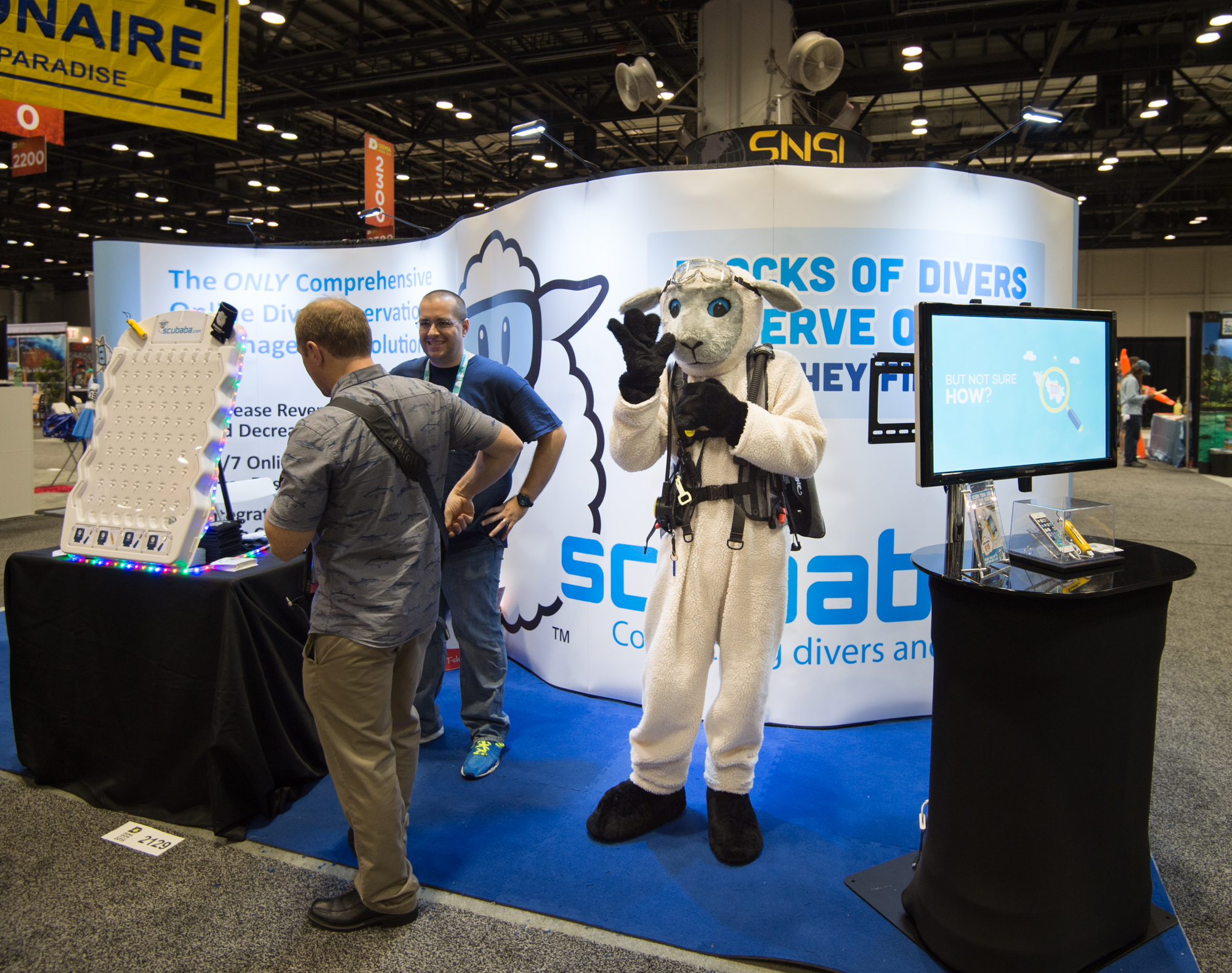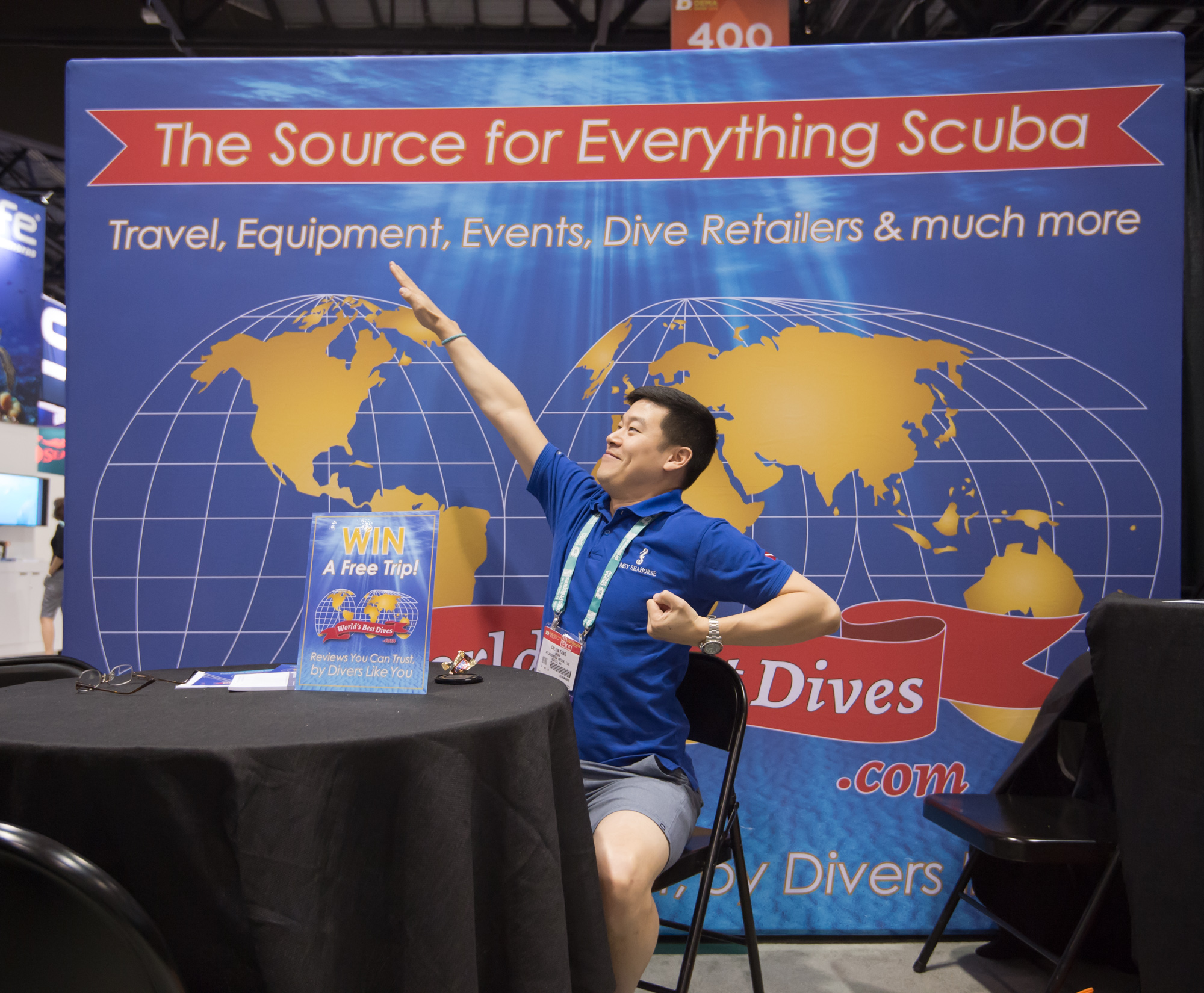The Diving Equipment & Marketing Association (DEMA) holds an industry conference each year, alternating locations between Orlando and Las Vegas. The 2015 show was held at the Orange County Convention Center in Orlando, Florida.
The DEMA Show is not open to the general public, as are other conferences such as the Long Beach Scuba Show; attendees are typically dive industry professionals such as equipment manufacturers, travel companies, certifying agencies, industry experts, resort/liveaboard operators, dive shop owners and staff, as well as members of the media.
During the four day DEMA Show there are countless business meetings, seminars, dealings between manufacturers and buyers, resorts and liveaboard dive boats selling various itineraries to dive shops and travel agents and much, much more. It's nearly a 24-hour affair each day as when the show closes down at 6PM the dinners and parties begin and last into the early morning hours each night. Show attendees wearily rouse themselves the following morning to do it all over again. I can usually only make it through about 3 days of this cycle :)
Upon entering the Orange County Convention Center attendees are immediately confronted with a massive hall filled with attention grabbing displays, bright lights and the steady din of activity coming from all sides.
2016 Dive Gear Previews
Arguably the most important scuba industry exhibition of the year in the United States, all of the large dive equipment manufacturers showcase their newest products in elaborate and beautiful displays for buyers to touch, feel and order for the coming retail year. In attendance and with ample floorspace were SCUBAPRO, Oceanic & Hollis, Aqua Lung, Mares, TUSA, Huish Outdoor Brands (Atomic Aquatics, Bare, Liquivision, Sharkskin, Zeagle), Fourth Element and many more.
I will say that in 2015 most of the well established dive equipment brands took an evolutionary approach to the products featured at the DEMA Show rather than a revolutionary one. Many brands showcased "refreshed" versions existing products, such as offering new color combinations and modest ergonomic improvements, rather than introducing paradigm-shifting new features, designs or materials. That is not to say that there wasn't much innovation on display at the show (there was) - but most of what I saw in that regard came from small to medium-sized companies pushing forward the boundaries of scuba technology in areas such as Closed Circuit Rebreathers (CCRs), Diver Propulsion Vehicles (DPVs) and lighting tech, for example. But hey, if it ain't broke don't fix it.
Innovation
With a few notable exceptions (such as the Hollis Prism 2 CCR, which seemed to be everywhere) smaller companies such as Shearwater Research and Light Monkey Enterprises seem to be the ones most impatiently pushing forward the boundaries of product development in 2015. Nimble and unhindered with bloated marketing budgets and risk-averse legal departments, these companies are innovating at a breakneck pace and serving fanatical- almost religious fan bases.
Tomorrow's most dominant players in the industry are leading the charge in today's race toward the future of scuba diving technology, and the line between recreational and technical dive gear continue to blur as a result. With the ongoing consolidation in the industry, I would not be surprised to see more of these small to medium-sized companies acquired by the largest brand names in the business. As the old adage goes: "build or buy."
Underwater Photography
Other than the recent somewhat incremental upgrade to the SEA&SEA YS-D2 underwater strobe, I didn't see too much in the way of new photo lighting technology at the DEMA Show 2015. That being said, I did evaluate two new systems that leverage underwater strobes that have me very excited to try in the water: fiber optic ring flash systems for underwater macro photography.
Both of these innovative systems run off of a user's existing strobe and bring the light from there to an evenly-spread ring just at the front end of the port via a circular array of fiber optic cables. I can barely contain my enthusiasm to try one of these, as I have seen a small handful of homemade/DIY setups produce great results already.
The more advanced system pictured below, complete with an array of compatible diopters in various strengths, is made by Saga Dive based in Spain. The other, more spartan model is made by Ultramax out of Vancouver, Canada. You might think from my description that the former is the one I'd most like to try. However, the Ultramax is more approachable in my estimation, as it is already compatible with various types of housing ports. Both are (for now) designed to be used with SEA&SEA YS-D1 / YS-D2 and similarly sized strobes, but the Saga Dive model would require me to use their proprietary port, which is a huge additional cost and also would rob me of the manual focus function, which I use very often. Therefore, the Ultramax model fiber optic ring flash system is the one I have my sights set on. For the person just building their u/w DSLR rig though, I can strongly advise taking a close look at the Saga Dive system, as it is well built and thoughtfully designed.
Saga Dive also showcased an incredible new snoot accessory, for shooting with tiny amounts of very focused light on small subjects. The innovation here is that the diameter of light escaping from the snoot can be easily controlled by simply rotating a clearly-marked rotating ring. It is simple and intuitive and one of the most groundbreaking underwater photo products I saw at the DEMA Show 2015.
I won't go too deeply into underwater housings in this report, mainly because I didn't spend a ton of time evaluating the various brands, and housings tend to follow camera body cycles. With the notable exception of the Sony a7R II, for which there are now various new housings available for, we are mid-product cycle in DSLR bodies. It is obvious that Nauticam is continuing to take the industry by storm, and I will have to seriously consider the expensive switch to one of their housings the next time I upgrade to a new DSLR system (yeah, I'm a luddite and don't think mirrorless is quite there yet when you consider the limited native lenses available to them). I am still a Subal shooter, and continue to enjoy the ND800 housing I have been using for the past couple years. I did spend a lot of time talking to the folks at Subal, both the owner and one of the main engineers. They have a lot coming through the pipeline in terms of new designs, features and finishes. We will see these new releases available after the new year.
Dive Travel
Much of the DEMA Show floorspace was dedicated to various travel related companies. Attendees from all corners of the industry take turns walking the floor, looking for their next bucket list destination. The dive operators, resorts and liveaboard boats pull out all the stops to entice travelers via DEMA special deals, most of which can also be booked by vacation divers, if they search diligently for these deals and book them within the first few weeks after the DEMA Show. The list of travel-related companies is extensive but destinations and operators that I spent time with and hope to visit (or revisit) soon myself are:
- Worldwide Dive and Sail (Siren Fleet)
- Sam's Tours Palau
- Bill Beard's Costa Rica
- Papua Explorers Raja Ampat
- Nai'a Liveaboard Fiji
- Misool Eco Resort
- Aggressor and Dancer Fleet Liveaboards
- Aiyanar Anilao
And of course my good friends at World's Best Dives are the ones oftentimes pointing me in the right direction when it comes to picking my next dive destination.
Well, this concludes recap of DEMA Show 2015 - now I need to go get back into the water and continue shooting away. I hope you enjoyed this summary, but what you really need to do is attend one of the DEMA Shows yourself, because as I alluded to in the beginning, much of the magic that happens each year occurs outside of the convention halls. Dive safe and buy smart.
words and photos by Calvin Tang © AtlasOmega Media, LLC

